Travel Safe


Ideas for finding yourself in Spain

Gregorian chant in a 18th century monastery
To be precise, the Monastery of Santo Domingo de Silos (Burgos). You’ll love wandering around its beautiful cloister and hearing the monks’ famous chant at Mass. There are many more monasteries to visit in Spain if you’re looking for peace and quiet, all with different stories behind them: Monastery of Yuste (Cáceres), Monastery of Yuso and Monastery of Suso (La Rioja), Monastery of San Juan de la Peña (Huesca), Monastery of Monserrat (Barcelona)… Also, in Spain there are some spectacular monastery-hotels, such as the Parador de Guadalupe (Cáceres) or the Parador de Cangas de Onís (Asturias). It really is a unique experience.
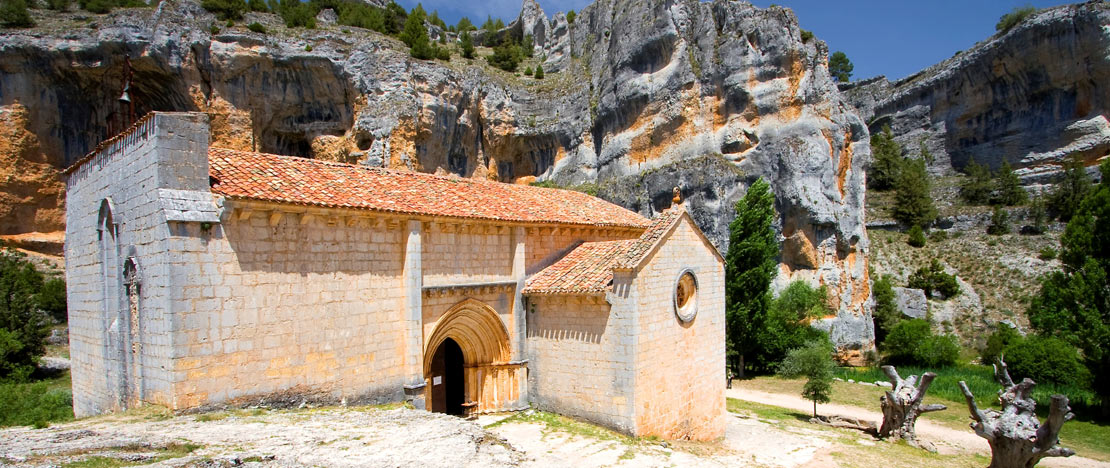
A Templar chapel surrounded by nature
In addition to its 16 National Parks , Spain has plenty more places where you can lose yourself in nature. For example, Cañón del Río Lobos Natural Park , between Soria and Burgos, where a chapel of the Knights Templar still stands in the middle of the forest and griffon vultures wheel above. It’s a magical place.
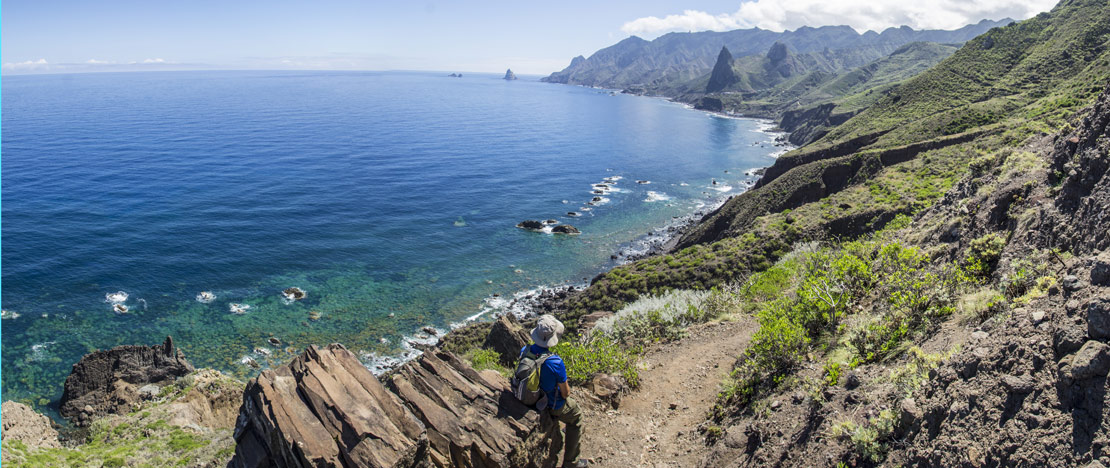
Routes to awaken the senses
The Path of the Senses in Anaga (Tenerife) is designed to let you explore your surroundings using smell, sight and touch. Looking for other unusual nature trails? Try the Art Trails in the nature of Sierra de Francia (Salamanca), with artworks hidden in the woods, or the Painted Forest of Oma (Vizcaya), a natural setting enhanced by the creations of the Basque painter and sculptor Agustín Ibarrola.
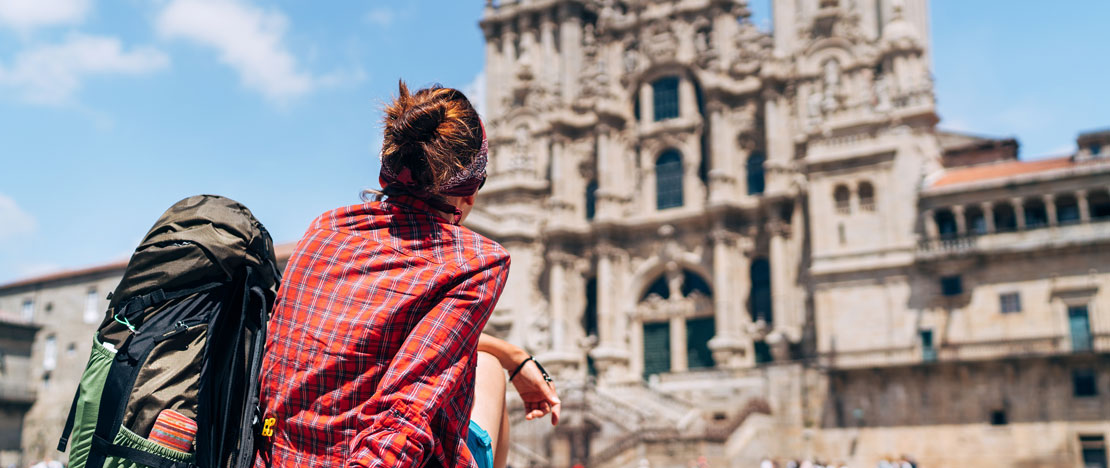
St James Way
St James’ Way is one of the world’s oldest and best-known pilgrimage routes, ending at the Cathedral of Santiago de Compostela (Galicia). As well as religious reasons, many people choose to walk or ride across northern Spain for the cultural experience, to enjoy the company of other pilgrims, or to find themselves along the way. Many have found it changed their lives.
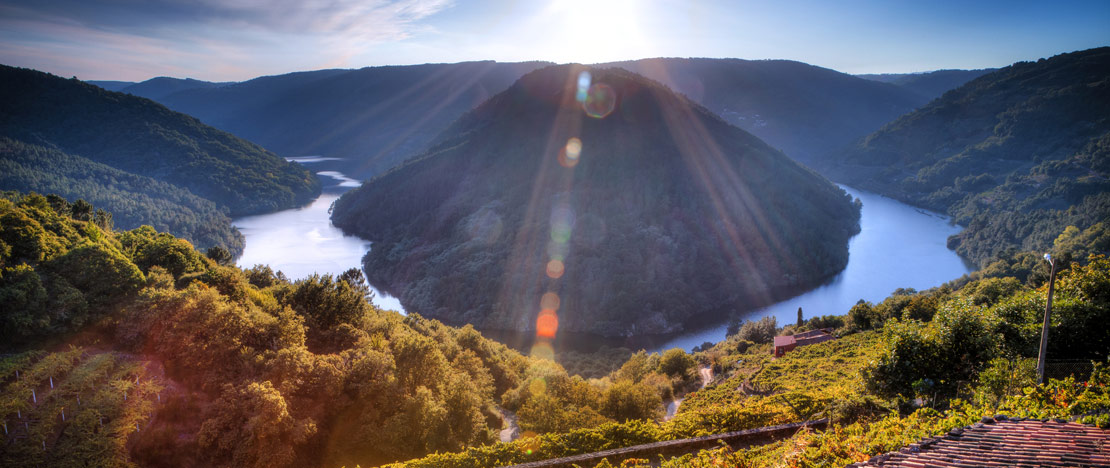
Ribeira Sacra
Still in Galicia, if you really want to get away from it all, we recommend this area, with one of the largest collections of Romanesque architecture anywhere in Europe. It’s also one of the few places on Earth where people practice “heroic viticulture” (growing grape vines on steep mountain slopes), and here you can navigate the gorges of the rivers Sil and Miño, and sleep in a monastery, the amazing Parador de Santo Estevo . Is there anything more relaxing than landscapes of woodland, vineyards and monasteries?
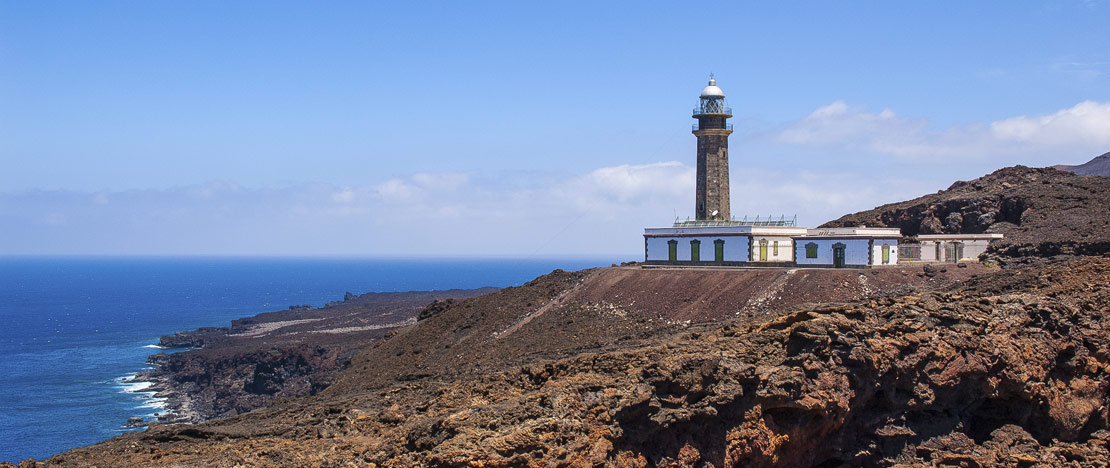
Four islands for getting away from it all
We start with El Hierro (Canary Islands), the world’s first completely self-sufficient island with all-renewable energy, and a Biosphere Reserve with 46 dive sites and spectacular volcanic scenery. Or maybe La Graciosa (Canary Islands), a small island northwest of Lanzarote . It’s just 30 square kilometres with no paved roads, ideal for travellers who love empty beaches, silence and beauty. A third option is Minorca (Balearic Islands), with plenty of slow tourism attractions, such as outdoor painting and local food markets, which you can enjoy in peace in spring and autumn. And from Minorca, you can take a side trip to the fourth island on the list, the tiny and charming Formentera .
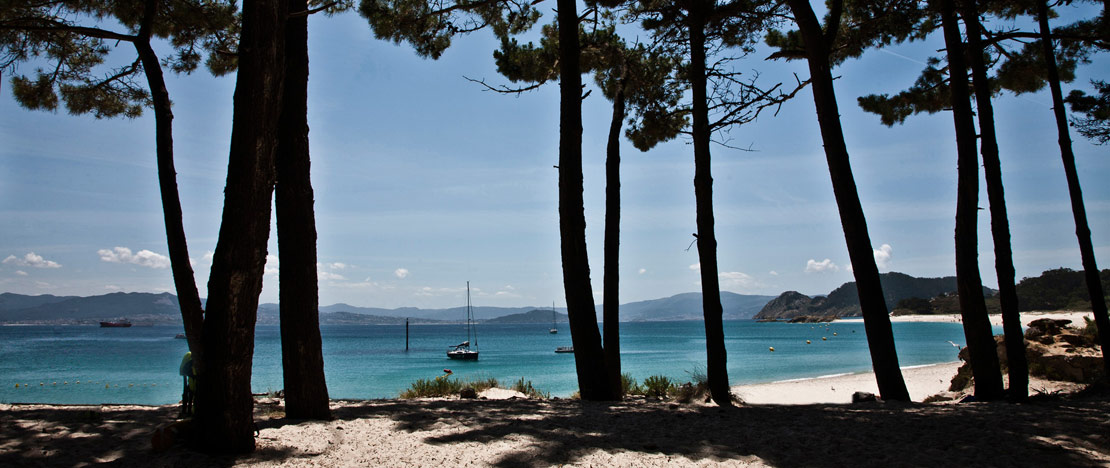
Glamping and eco hotels
Glamour + camping = glamping. In other words, camping in the lap of luxury. There are increasing numbers of places in Spain offering glamping holidays and other unusual holiday ideas, such as spending the night in a tree house or a lighthouse. If you prefer traditional camping, you can do it in unique places like the Cíes Islands (Pontevedra). And there’s a growing demand for eco hotels offering fresh seasonal food for breakfast, such as eggs from their own hens.
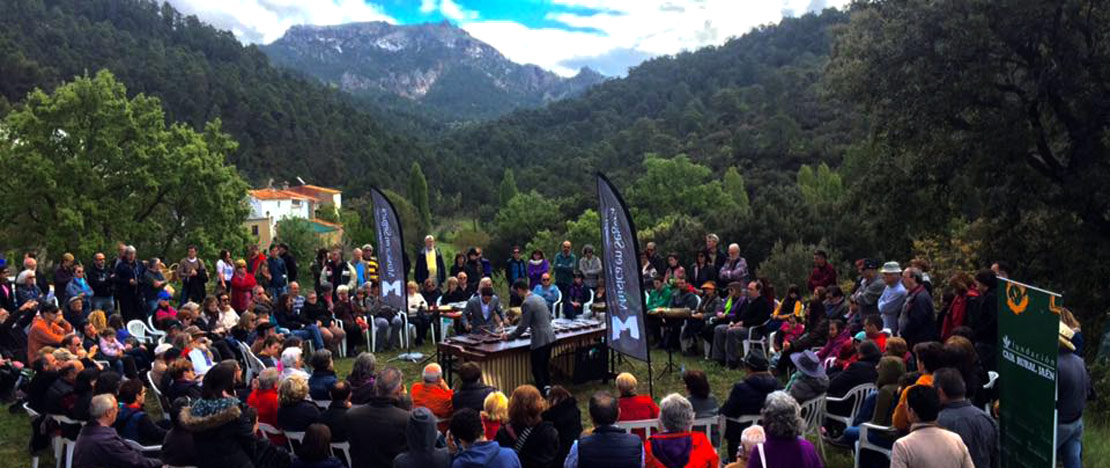
More intimate festivals
As well as the crowded mega-festivals, there are several smaller ones in Spain, held in places with a charm all their own. A few examples: The Música en Segura Festival defines itself as a musical delicatessen festival, and is held in one of Spain’s most beautiful villages, Segura de la Sierra (Jaén), at an altitude of 1,200 metres and with 140 inhabitants. And “ Pirineos Sur ”, where you can hear a huge range of world music on a floating stage on the Lanuza reservoir in the Aragonese Pyrenees.
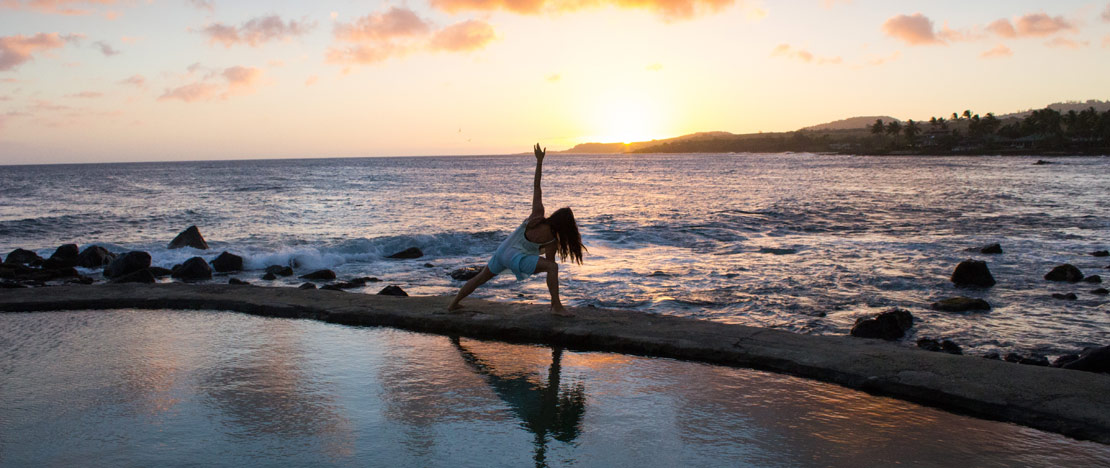
Different ways to do yoga
What happens if you combine two passions like yoga and travel? You get such unusual activities as hatha yoga surrounded by nature, or yoga-sup, where you do yoga on a stand-up paddleboard. Are you in?
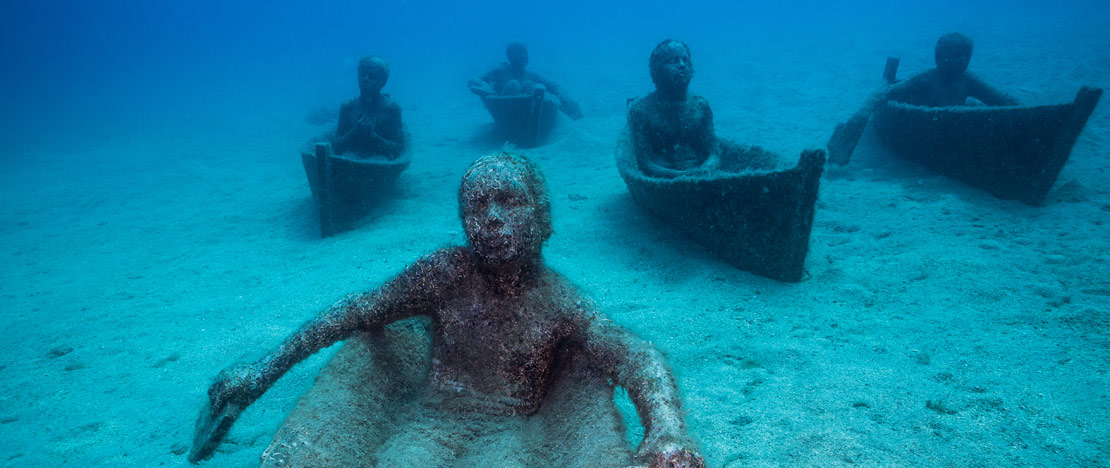
An underwater museum
Will you see statues? Yes, but 12 metres down. The artist Jason deCaires Taylor made these spectacular creations in Lanzarote to draw attention to the need to care for the oceans, hoping to use them to generate an artificial coral reef. If you want to dive to see them, you will need diver certification showing you can dive to a maximum depth of 16 metres.
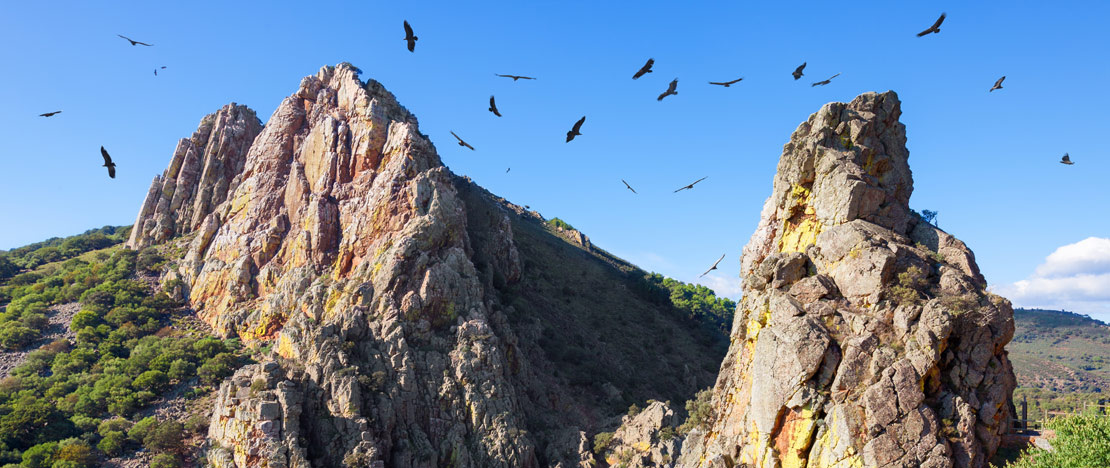
Birds and stars
There are plenty of places in Spain where you can enjoy the peace and quiet needed for birdwatching, but we particularly recommend Monfragüe National Park in Extremadura. By day, you can see some of Europe’s most iconic birds, including black storks, black and griffon vultures, eagle owls and imperial eagles. By night, as Monfragüe is a Starlight Tourist Destination, it’s also one of the best places for stargazing. The Milky Way has to be seen to be believed, and there are several astronomical observatories.
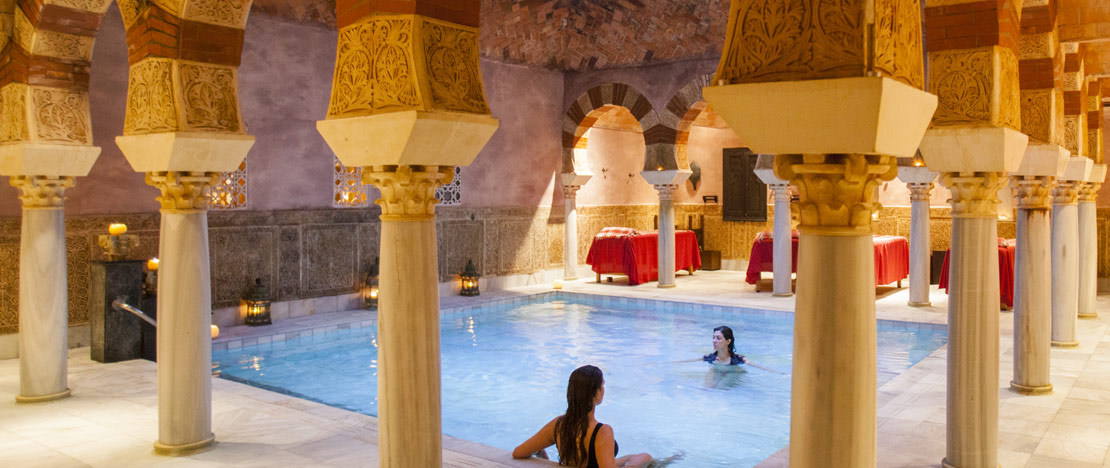
Hot springs and Arab baths
Some of the most famous hot springs in Spain are in the city of Ourense and its pools of hot water with medicinal properties. There are outdoor ones free of charge on the banks of the river Miño, and private ones with zen spa treatments, waterbeds, wine therapy, chocolate therapy… Looking for another way to really relax? Try the Arab baths in cities like Granada and Cordoba .
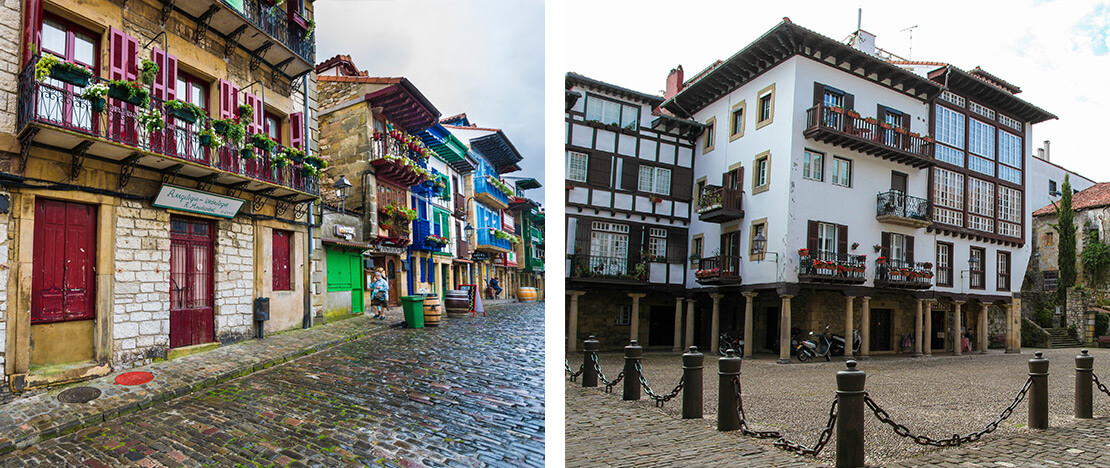
Medieval towns and villages
It’s like a trip in a time machine - visit other eras in towns and villages like Laguardia , Almazán , Consuegra , Hondarribia , Manzanares El Real , Estella-Lizarra , Olivenza , Jerez de los Caballeros , Ciudad Rodrigo or Sigüenza . Be prepared to explore castles and enjoy events like medieval tapas contests.

Choose between thousands of activities to live your best life on holiday.

Slow Traveling Andalusia, Spain: Pueblos Not to Miss

I may earn income from affiliate links or partnerships in this post. I spend time to curate tours or products that align with my values. Thanks for supporting my work, at no additional cost to you.
Last updated on April 2nd, 2021 at 08:00 pm
A re you curious about slow traveling through Andalusia, Spain? The charming pueblos sprinkled throughout Andalusia, oozing with rich culture and history, are best experienced at a slow pace, soaking in everything they have to offer. We welcome guest author Bag Lady, Meredith San Diego , who lives in Spain, to share her favorite pueblos you simply can’t miss. Whether you’re looking for rich cultural exchanges, outdoor adventures, or history she’s got you covered. Check out her full author bio at the end to connect, and make sure you follow her for sustainable and slow travel tips. [no_toc]
What We’re Covering
What is Slow Travel
Pueblos Not To Miss
Priego de Cordoba
Setenil de Las Bodegas
Slow Travel: The Future
Why Slow Travel Through Andalusia?
Have you been wondering what the benefits of slow traveling actually are? It’s a term that keeps popping up in recent months tied to the sustainable traveling movement. The truth is most folks are lost on how slow traveling can actually benefit them. Allow me to explain it a bit further. The idea is to take one’s time exploring a destination to support the local economy. If this notion piques your curiosity, then read on. These are my personal experiences of slow traveling Andalusia and a few of the pueblos not to miss.
My first time in Spain was back in 2014. I would have graciously guffawed at anyone proclaiming that five adventure-packed years later, I would be relocating here. Life, it’s what happens when you’re busy making plans for other things, right? Those first adventures in Spain were spent train-hopping from one big city to the next. Thankfully, my last handful of years backpacking imprinted the idea of minimalism and slow traveling on my adventure backdrop. In hindsight, a brilliant adaptation considering the state of the world these days. Thankfully, I wasted no time getting out there to explore the charm of the white-washed buildings of Andalusia.
So, which pueblo did I slow travel to first?
Taking advantage of living in Andalusia as an Auxiliar , long and short-distance buses were the go-to for logistics. Typically buses in Europe are affordable, quasi reliable, and some come with working toilets and wifi. As a temporary resident of Cordoba, there were actually dozens of pueblos to choose from. So much so that the choice of where to start was challenging. Luckily, some colleagues were born in several pueblos scattered throughout the province. But as a result of a few short Spanglish conversations later, I had some direction. One of these towns was a mear 33 minutes east of my location. How could I not check it out?
Boy, am I glad that I did. Priego de Cordoba is set in the olive tree-covered foothills of the Sierra Nevada mountains. This charming pueblo is known for the Baroque-style churches and genuine hospitality of locals. Various violent sieges have historically ravaged this area of the region. Nowadays, Priego de Cordoba is a quiet town comprised of less than 23,000 folks.

The perfect slow-moving day trip to the town opened my eyes to the beauty of the Andalusian region. Olive trees as far as the eye can see, the smell of those being pressed for oil hanging on the warm summer air. The sun hung high in the midday sky, acting as a spotlight as I explored cobblestone street after cobblestone street. Smiling and greeting each stranger ( Buenas ) that passed me as I snapped and posed for photos.
Where should you slow travel to next?
If you enjoy outdoor activities, don’t miss out on slow traveling to Iznajar. There’s a little something for everyone to be found there. Some examples include hiking, windsurfing, city walks, and there’s even a beach. These elements serving as a handful of reasons why this location is highly desirable. Also located in the Cordoba province, Iznajar is almost right in the middle of the region. This hillside pueblo sits right along the Genil River. As if the white walls decorated by carnations spilling over hand-decorated ceramic pots wasn’t an excuse enough, right? Go on and Google the images; I’ll wait.
For the history lovers out there, the castle was built in the 8th century, the main church in the 16th. This pueblo is dripping in the best of Andalusian culture in the best ways. It’s worth noting that Iznajar is a seasonal location. Meaning you will witness the beauty in the online images you just scoured at a specific time of the year. Typically, the climate is sunny all year in this region, but visiting between April and September is recommended. July and August being the hottest months of the year.

My time in Iznajar was short and at the beginning of the Christmas holiday. As a result, many sights were closed, and the streets were pretty barren. Nonetheless, the calmness of the day made for amazing bird watching. But I did take advantage of snapping more than few breathtaking landscapes not interrupted by human bodies, too.
Which pueblo did slow traveling Andalusia take me to next?
Located in the province of Cadiz, places like Setenil de Las Bodegas date back to the era of Romans. This pueblo dates back to the 12th century in history books. However, it’s rumored plenty of inhabitants were there much earlier than that. Perhaps having a portion of the pueblo built into the hillside has something to do with it. Or perhaps the wine and olive oil, which are both pristine from this province, respectively.

My visit to this town was as part of a day trip organized by Delgado Viajes . The day’s adventure included a stop in one other popular pueblo, Ronda. Both towns are aesthetically pleasing and highly recommended. The vistas (views) offered in both destinations will slap you with wanderlust’s open hand. Strolling through the rock-covered alleyways and climbing stairs likely built by Romans were my highlights.
What did slow traveling Andalusia teach me?
Slow Travel, The Future of Sustainable Travel
What’s not to love about taking the time to slowly introduce yourself to the history, culture, and gastronomy of a foreign country? Not a whole lot else, in my personal opinion. Tourism as an industry is leaning in on sustainability. Will you lean into learning more about how it can benefit you too? Slow traveling can be a healthy substitute for luxury travel. Consider it as a mindset, and the concept can be applied in almost any scenario. The responsibility falls to all of us to do our part before tourism as a whole disappears.
The passion for exploring this planet runs deep in my wanderlust veins. Therefore, I take my chosen method(s) of traveling quite seriously, as do I the opportunity to educate others on how to do the same. Slow traveling Andalusia exposed me to many memorable pueblos. What will slow traveling show you on your next adventure?
Spread the Curiosity
Have more Andalusian pueblo recommendations? Drop them in the comments and tell me why it was memorable for you.
What is your favorite place to slow travel? Or what is the benefit of slow traveling through your home region? Share in the comments so we can all plan our next slow adventure.
Thanks again, to Bag Lady Meredith San Diego for this guest post. If you’re looking for unique sustainable, eco, or solo female travel content then work with Meredith for optimized content, with a personal touch!

About the Author: Meredith San Diego
Related Posts

22 Sustainable Beach Tips to Plan an Eco-friendly Beach Trip

Impacts of Beach and Coastal Tourism – Sustainable Beach Vacations

Strasbourg Christmas Market 2023 Sustainable Guide
Leave a comment cancel reply.
This site uses Akismet to reduce spam. Learn how your comment data is processed .

11 Small Towns and Villages in Spain for Slow Travel
These quaint small towns and villages will offer you a different experience of Spain, with each stop featuring its own unique culture, history, and architecture.
The best way to explore Besalu is on foot. Take along your camera because you will want to capture the incredible architecture and views at the Romanesque bridge . Dating all the way back to the 12 th century, this historic bridge stretches across the Fluvia River and can only be traveled on foot. Besalu is also home to beautiful Jewish synagogues and the historic Monasterio de San Pedro.

The scenic village of Deia is located in the Serra de Tramuntana mountains. Here, you can explore steep cliffs with breathtaking views of the Mediterranean Sea. Take a trip through the numerous olive grows or explore the Cala de Deia inlet. Fans of poet and novelist Robert Graves, will also want to make a stop at his private home, which is now open for tours to the public.
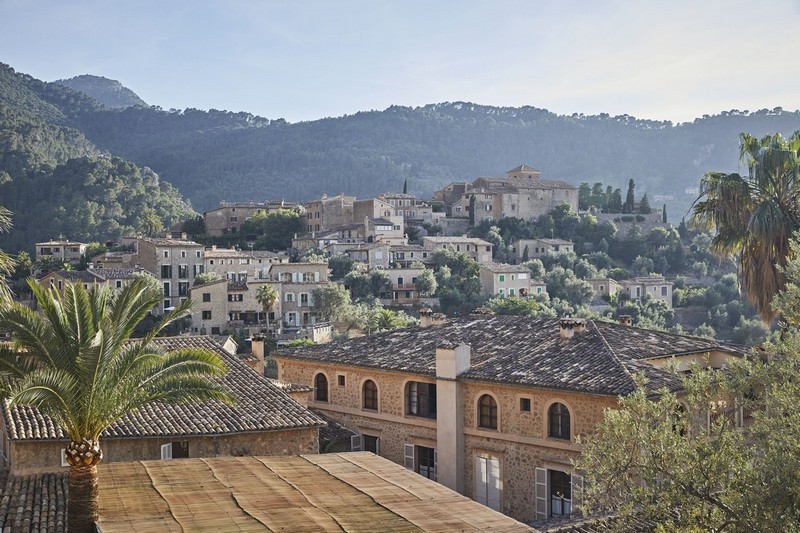
If you love history, the medieval town of Ainsa is a must-see destination in Spain. Here you will find the Ainsa Castle , nestled in the shadows of the towering Pyranees Mountains. This castle includes original architecture from the 11 th century, along with additions made in the 16 th century. Within the castle, you’ll find two museums where you can learn more about the Pyrenees region and Spain’s unique history.
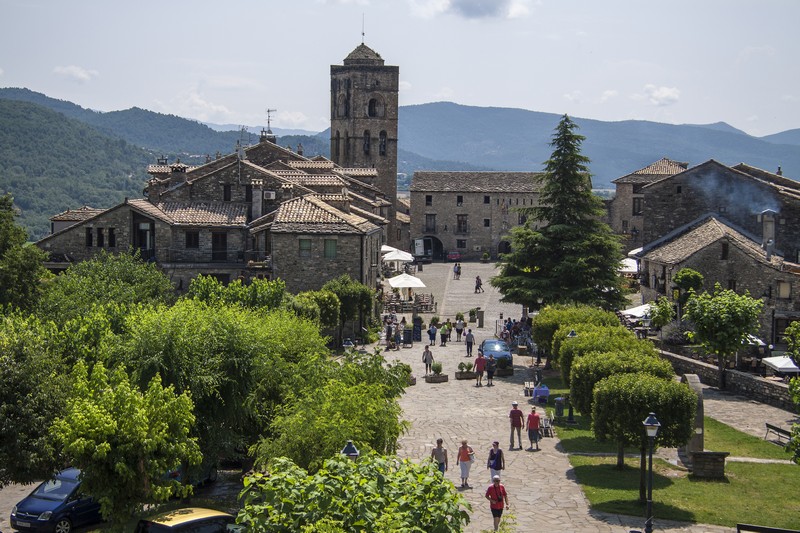
Beach lovers will enjoy this small village on the northern coast, overlooking the scenic Bay of Biscay. In Cudillero, you’ll enjoy some of Spain’s best seafood and peaceful blue waters at the popular Playa del Slencio beach. If you’re searching for a beach campsite in Spain , don’t overlook this jewel.
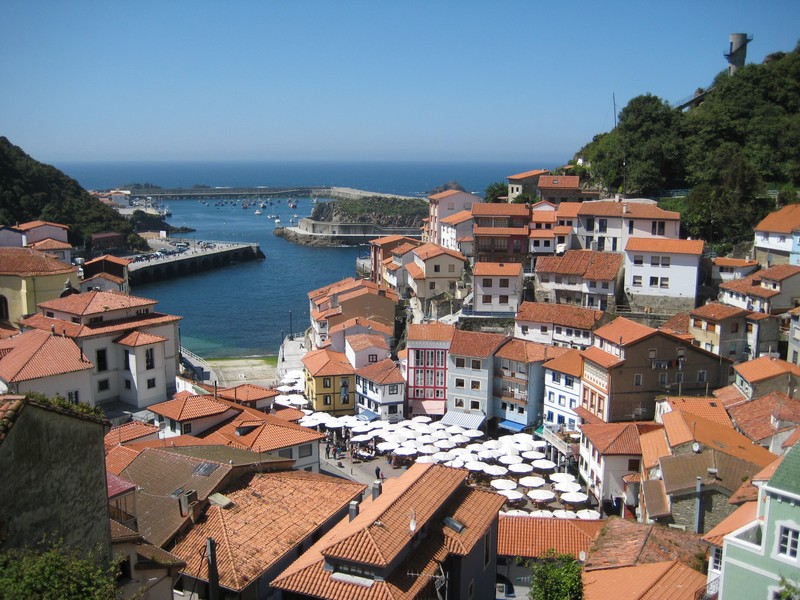
For travelers who love history and architecture, the ancient walled city of Morella is a must-see destination. There is much to see and do, but make sure you visit the Morella Castle and take time to enjoy the ornate beauty of the Morella Walls. Culinary treats also abound in this area, with bakeries featuring Spain’s unforgettable flaons, a flaky pastry filled with cheese.

Nested in northern Spain, the town of Alquezar is built into a limestone outcropping. Here you’ll find a variety of artifacts to enjoy, especially at the Colegiata de Santa Maria la Mayor Museum. Outdoor lovers will enjoy biking and birdwatching at the Rio Vero Canyon. There is much to see and do in the beautiful landscape of Alequezar.

In the scenic coastal region, travelers can enjoy the best of Spain’s beachfront in the town of Cadeques. Best known for being home to painter Salvador Dali, the artsy vibe in this area makes it an unforgettable place to explore. Visit Dali’s house and then head down the tiled walkways to explore local boutiques and dine on delicious fresh seafood. Don’t forget to spend some time at the beach, the crown jewel of Cadaques, with unforgettable views of the Mediterranean Sea.
#Sentinil de las Bodegas
Nestled in a river gorge, Sentinil de las Bodegas is unlike any other destination in Spain. The gorge serves as an external roof wall for the town, dating back thousands of years to a time when locals actually lived in caves. Grab lunch at an outdoor café, shaded by the enormous cliff overhead. It’s an experience you will only find in Sentinil de las Bodegas.
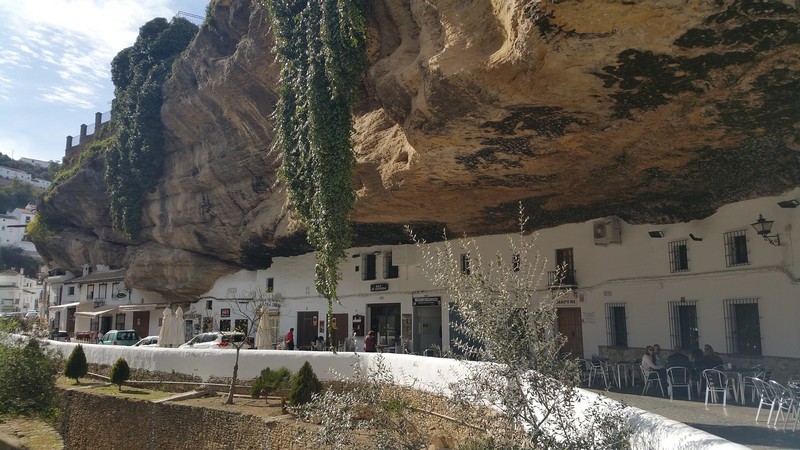
The one of a kind town of Mojacar offers the relaxed experience of a beach resort with the sights and sounds of a mountain village. Dating back more than 4000 years, this town features beautiful white architecture, exquisite food, and a beautiful beach resort called Mojacar Playa.
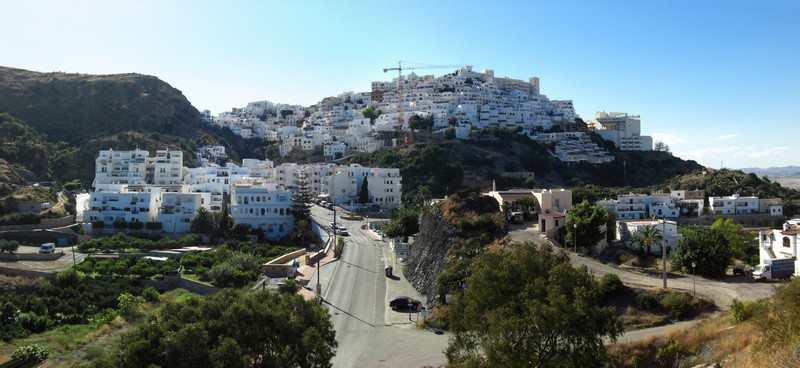
Grazalema is an old village nestled in the northeastern Cadiz province. Here you can experience a unique piece of Spain’s culture and dine on local honey or shop for souvenir blankets featuring traditional Spanish weaving techniques. Grazalema is also a popular stop for adrenaline junkies who can’t get enough of the bull festival celebrations.
For a slower paced, laid back travel adventure, visit the tiny fishing village called Combarro . Here you can find a harbor where fisherman gather to set sail on a fleet of beautiful boats. Historic huts are perched along the water’s edge, inviting you to slow down and stay awhile. No trip to Combarro would be complete without sampling the fresh caught shellfish that makes this region so popular with travelers from all over the world.
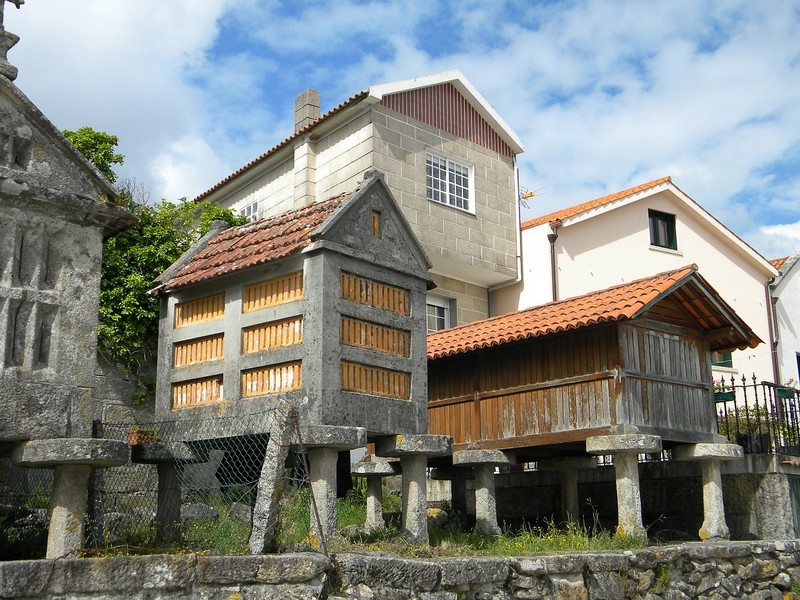
As you plan your trip to Spain, make sure to carve out time to explore some of these small towns and villages. From beachfront campsites to historic huts and outdoor cafes, Spain’s small towns give you a closer look at what truly makes this country extraordinary.
Related Posts
10 mistakes to avoid before airport arrival, asia calling: cultural getaways to visit in 2024, how gen z college students are pioneering sustainable travel education, write a comment cancel reply.
Save my name, email, and website in this browser for the next time I comment.
Type above and press Enter to search. Press Esc to cancel.
- Slow Travel Explore Hidden Spain...
Slow Travel – Explore Hidden Spain by Train

Editorial Manager
Train travel will be a clean and safe way to get around in many countries once international holidays return. Spain has plenty to offer rail enthusiasts, with a large network that spans the length and breadth of the country, and sleeper carriages helping travellers cover long distances with minimal fuss. Here’s how to enjoy a leisurely tour of the best towns and cities in Spain .
There are better-known train routes across Europe , but there’s something special about taking a seat to watch Spain’s lush landscape rush by. Buying a ticket is as simple as ordering a plate of tapas and a glass of sherry in the afternoon, so there’s little to worry about when planning your journey in advance.
It’s worth giving some thought to where you should go, though, in order to make the most of your time. Take overnight trains if you are able to sleep on the go – it saves you money as it means one less night in a hotel. We’ll start by having a look at some of these increasingly popular late-night journeys – while bearing some of the current restrictions in mind – and then embark on a wider tour of the country.
Trenhotel and overnight trains
One of the best overnight services in the world, this practical way of getting around was largely suspended as a result of the Covid-19 pandemic. Not only is this comprehensive domestic network a great way to see Spain, it also connects other European destinations in Portugal and France . The network is operating in a few locations where limited timetables are still in use, and the hope is that a full service will return at some date soon.
Some limited services are still operating around Galicia in the northwest of Spain, and overnight train travel routes are still being implemented around the continent. There is a growing feeling that when it is safe to do so, people will want the convenience and stress-free simplicity of a holiday on rails. Trenhotel is one option to keep in mind for later in the year – although not the only example of a hotel on rails, as we will shortly find out.

The best Spanish destinations to discover by train
As with the Trenhotel network, other domestic routes are also facing Covid restrictions. The destinations themselves, however, are ready and waiting for tourists. Here’s a rundown of lesser-known favourites you can travel to when it’s safe to travel again.
Hardly an unknown destination, Córdoba is nonetheless overlooked by many when touring Andalusia. It’s a relatively large city, although the historic quarter, where most of the main attractions are found, is easy to navigate on foot. The train from Seville to Córdoba takes less than 45 minutes, so you can go on a day trip if you’re short of time. And if you want to explore more of the region, carry on to other popular hotspots such as Granada and Málaga .

Santiago de Compostela
There’s a seasonal luxury option if you want to visit the capital of Galicia: the Transcantábrico is Spain’s first train hotel, offering an eight-day journey from San Sebastián that’s a lavish affair filled with the region’s finest cuisine and all the comforts you can think of. You can get regular trains on this route, too, and they won’t set you back thousands. Galicia is one of the best in Spain for tourists looking to avoid large crowds, and Santiago de Compostela is the final stop on the pilgrimage known as the Camino de Santiago , which starts in France.

There’s a large student population in this city to the west of Madrid , so there’s a lively nightlife scene to enjoy – but we’re here for more cultural pursuits. Medieval streets and squares await you as you disembark from the train into Salamanca, and you can continue your journey from here to most parts of the country when you decide to head elsewhere. Make sure you spend a little time here, though, as there’s plenty to see.

If you’re heading to Barcelona , the Catalan capital, there are a few options if you’re looking for a relatively serene escape from the city. Sitges is hardly a secret hideaway you’ll be able to claim for yourself, but it makes a great breezy stop along the coast if you visit by train. There are great beaches, an international horror-film festival and great places to stay here. If you want a really relaxing escape we recommend a trip up the coast on the other side of Barcelona, to Tossa de Mar, but you have to take a taxi to get to the best attractions there, so it just misses out on this list.

Why have we picked another coastal town for our final entry? It’s a fair question, but Gijón is very different to our previous picks. Ancient maritime traditions still survive here, and you are guaranteed some of the finest cuisine in Spain, especially if you’re a fan of seafood. There is a grim industrial veneer to some areas of the suburbs as you come in by train from Oviedo, but things pick up significantly as you reach the ports. The journey itself is very pleasant, and the surrounding areas are some of the greenest in Spain. You’ll also be able to find out for yourself exactly why some locals have labelled a prominent work of modern art El Váter de King Kong (King Kong’s toilet)!

Since you are here, we would like to share our vision for the future of travel - and the direction Culture Trip is moving in.
Culture Trip launched in 2011 with a simple yet passionate mission: to inspire people to go beyond their boundaries and experience what makes a place, its people and its culture special and meaningful — and this is still in our DNA today. We are proud that, for more than a decade, millions like you have trusted our award-winning recommendations by people who deeply understand what makes certain places and communities so special.
Increasingly we believe the world needs more meaningful, real-life connections between curious travellers keen to explore the world in a more responsible way. That is why we have intensively curated a collection of premium small-group trips as an invitation to meet and connect with new, like-minded people for once-in-a-lifetime experiences in three categories: Culture Trips, Rail Trips and Private Trips. Our Trips are suitable for both solo travelers, couples and friends who want to explore the world together.
Culture Trips are deeply immersive 5 to 16 days itineraries, that combine authentic local experiences, exciting activities and 4-5* accommodation to look forward to at the end of each day. Our Rail Trips are our most planet-friendly itineraries that invite you to take the scenic route, relax whilst getting under the skin of a destination. Our Private Trips are fully tailored itineraries, curated by our Travel Experts specifically for you, your friends or your family.
We know that many of you worry about the environmental impact of travel and are looking for ways of expanding horizons in ways that do minimal harm - and may even bring benefits. We are committed to go as far as possible in curating our trips with care for the planet. That is why all of our trips are flightless in destination, fully carbon offset - and we have ambitious plans to be net zero in the very near future.

Guides & Tips
Reasons why you should visit la rioja, spain.

The Best Private Trips to Book for Your Spanish Class

Places to Stay
The best hotels to book in salou, catalonia.

Reasons Why You Should Visit Andalucia, Spain

The Most Beautiful Train Stations in the World

Bars & Cafes
The best wine bars in la rioja, spain.

The Best Hotels to Book in Catalonia

The Most Unique Temples and Churches in the World

The Best Private Trips to Book for a Foodie Adventure

The Best Places to Travel in June

Top Tips for Travelling in Spain

See & Do
Getting a taste of picasso in malaga, culture trip spring sale, save up to $1,100 on our unique small-group trips limited spots..

- Post ID: 1001806895
- Sponsored? No
- View Payload

SUSTAINABLE TRAVEL
Country guides, slow travel.

- DESTINATIONS & HOTELS
Social & B2B

Find Best Flight Prices From Our Trusted Partners
You don't need to waste your time and money anymore.
The Art of Savoring Every Moment: Exploring Spain's Best Slow Travel Locations
Welcome to a journey that's all about slowing down, embracing the beauty of the present and savoring every moment in Spain's most captivating destinations. In today's hyper-connected world, where life seems to zoom by at lightning speed, we often forget to fully immerse ourselves in the experiences unfolding before our eyes. But worry not! We're here to remind you that there is an art to slowing down and truly cherishing every step of your travel adventure. So join us as we unveil Spain's best-kept secrets for slow travel – from charming villages nestled amidst rolling hillsides, to hidden coastal gems where time seemingly stands still. It's time to escape the rush and embark on an enchanting journey through Spain's finest slow travel locations - a celebration of both relaxation and exploration that will leave you with memories etched forever.
Top Destinations in Spain for Slow Travel:
Slow travel is a growing trend that focuses on immersing oneself in the local culture and taking the time to fully appreciate each destination. And when it comes to Spain, there are plenty of hidden gems and charming towns that are perfect for slow travel. In this section, we will explore some of the top destinations in Spain that are ideal for experiencing the art of savoring every moment.
1. San Sebastian
Nestled in the Basque Country region, San Sebastian exudes old-world charm with its cobblestone streets, picturesque beaches and stunning architecture. This coastal city is also known as a foodie paradise, with numerous bars offering mouth-watering pintxos (Basque-style tapas). Take leisurely walks along La Concha beach or get lost in the winding streets of the Old Town, where you can stumble upon quaint local shops and cafes.
Located in southern Spain's Andalusia region, Ronda is a tranquil mountain town perched atop a deep gorge. With breathtaking views at every corner and an impressive history dating back to Roman times, Ronda is an ideal destination for slow travel. Stroll through its narrow alleyways and discover charming white-washed houses adorned with colorful flower pots. Make sure to visit Puente Nuevo (New Bridge), which offers magnificent panoramic views of the surrounding countryside.
Granada, located in the southern region of Andalusia, is a city rich in history, culture and stunning landscapes. Known for its magnificent Islamic architecture and vibrant flamenco scene, this charming city also offers a slower pace of life that invites visitors to savor every moment.
One of the highlights of Granada is the Alhambra Palace, a sprawling complex built in the 14th century during Muslim rule. This UNESCO World Heritage Site boasts intricate carvings, breathtaking gardens and stunning views of the Sierra Nevada mountains. Visitors can spend hours wandering through the palace's many rooms and courtyards, immersing themselves in the beauty and history of this ancient structure.
For those looking to experience traditional Spanish culture at a leisurely pace, Granada's old town or "Albaicín" neighborhood is a must-visit. With its narrow winding streets, whitewashed buildings adorned with colorful tiles and quaint cafes serving up tapas and local wines, this area exudes old-world charm. Take your time to explore the cobblestoned alleys lined with souvenir shops selling traditional handicrafts and stop by one of the many plazas to people-watch or listen to street musicians playing soulful flamenco tunes.
Another way to fully embrace slow travel in Granada is by indulging in an authentic hammam experience. These traditional Arab baths offer a peaceful oasis where you can relax in heated pools while enjoying a soothing massage or aromatherapy session.
Nestled in the heart of the Basque Country, Bilbao is a vibrant city that offers a perfect blend of old-world charm and modernity. It's known for its rich culture, mouth-watering cuisine, and stunning architecture. Slow travel enthusiasts will find this bustling metropolis to be an ideal place to savor each moment as they dive deep into the local way of life.
Cultural Delights: Bilbao’s cultural scene is something to behold. The city boasts numerous museums, galleries, and art centers that showcase the region's history and contemporary art scene. One must-visit spot is the Guggenheim Museum Bilbao, a masterpiece designed by world-renowned architect Frank Gehry. This iconic building is not only home to some of the most exquisite modern art collections but also an architectural marvel in itself.
Another cultural gem in Bilbao is the Bilbao Fine Arts Museum, which houses over 10,000 paintings, sculptures, and other artworks from renowned Spanish artists such as Goya and Picasso. For those who want a deeper understanding of Basque heritage and traditions, a visit to Euskal Museoa (Basque Museum) is highly recommended.
Sensational Gastronomy: The best way to experience any culture fully is through its food. And when it comes to gastronomy, Bilbao has no shortage of options.
Seville, the capital city of Andalusia, is a charming destination that truly embodies the art of slow travel. With its rich history, vibrant culture, and relaxed pace of life, Seville offers visitors the chance to savor every moment and immerse themselves in the local way of life.
One of the best ways to experience Seville is by simply wandering around its narrow streets and taking in the beauty of its architecture. The city's old town, also known as Casco Antiguo, is a maze of cobbled streets, white-washed buildings adorned with colorful tiles and intricate balconies. It's easy to get lost in this labyrinthine neighborhood, but that's part of the charm – getting off the beaten path and stumbling upon hidden gems such as local shops selling traditional handicrafts or quiet plazas lined with orange trees.
One must-visit location in Seville is the Alcázar Palace – a stunning UNESCO World Heritage Site that showcases a mix of Moorish and Renaissance architecture. Take your time exploring the palace grounds, from its beautiful gardens filled with fountains and exotic plants to its lavish rooms adorned with elaborate decorations and works of art.

Local Experiences to Embrace:
When it comes to embracing slow travel, immersing yourself in the local experiences of Spain is key. It's important to take time to connect with the culture, people, and traditions of a place in order to truly savor every moment of your travels. Here are some unique local experiences that you won't want to miss when exploring Spain's best slow travel locations.
1. Participate in a Traditional Paella Cooking Class: One of the most iconic dishes of Spain is paella, a flavorful rice dish typically cooked with seafood or meat. While you can find paella at most restaurants throughout Spain, there's no better way to experience it than by preparing it yourself during a traditional cooking class. Not only will you learn about the history and techniques behind making this delicious dish, but you'll also get a chance to bond with locals and other travelers over a shared love for food.
2. Stroll through Local Markets: Visiting local markets is a great way to immerse yourself in the daily life of Spaniards. These vibrant and bustling markets offer an array of fresh produce, meats, cheeses, flowers, and handicrafts for sale. Take your time wandering through the aisles and interact with friendly vendors as they share their stories and cultural insights with you.
3. Attend a Flamenco Show: Flamenco is one of the most well-known dance forms originating from Andalusia, southern region of Spain.
- Cooking Classes
Slow travel is not just about leisurely strolls and immersing oneself in the local culture. It also presents a unique opportunity to learn new skills and enhance one’s knowledge through enriching experiences. One such experience that should not be missed while visiting Spain is taking cooking classes.
Spain is renowned for its vibrant and diverse cuisine, and the best way to truly appreciate it is by learning how to prepare some of its most iconic dishes. Cooking classes in Spain offer a hands-on experience where participants can learn from experienced chefs and gain valuable insights into Spanish culinary traditions.
There are many options available for cooking classes in different cities across Spain, each offering a different focus on regional specialties or specific techniques. For example, in Barcelona, you can find classes that specialize in traditional Catalan dishes like paella or tapas, while Madrid offers opportunities to learn about their famous cocido stew or jamón ibérico (cured ham). Additionally, smaller towns such as Seville or Granada provide a more intimate setting for cooking classes where you can discover lesser-known dishes from the Andalusian region.
Aside from learning new recipes and techniques, cooking classes also offer an authentic cultural immersion as they often take place in local homes or traditional markets. This allows participants to interact with locals, explore ingredients at local markets or farms, and gain an understanding of how food plays an integral part in Spanish culture.
Language Immersion
Language immersion is more than just learning a new language - it's a complete cultural experience that allows you to fully immerse yourself in the local way of life. Spain is known for its rich history, stunning landscapes, and vibrant culture, making it the perfect destination for language immersion.
There are many ways to achieve language immersion while traveling through Spain, and one of the best methods is by choosing slow travel locations. Slow travel emphasizes taking your time to truly savor every moment and fully immerse yourself in the local culture. This allows for a deeper understanding and appreciation of the language and customs.
One of the most popular ways to immerse oneself in Spanish culture is by enrolling in a language course. There are numerous options available, from intensive courses with daily classes to more relaxed programs where classes are combined with cultural activities. These courses not only provide structured learning but also offer opportunities to interact with locals and practice speaking Spanish outside of the classroom.
Another way to immerse yourself in Spanish culture is by staying with a host family. This not only gives you the chance to practice your Spanish on a daily basis but also provides an authentic glimpse into the day-to-day life of Spaniards. Living with locals will expose you to their traditions, food, music, and other aspects of their unique way of life.
- Cultural Festivals
Spain is a country rich in culture, history, and traditions. It is also known for its vibrant celebrations and festivals that reflect the unique identity of each region. From flamenco to bullfighting, Spain's cultural festivals are an integral part of the country's identity and an essential aspect of slow travel.
One of the most iconic cultural festivals in Spain is the Running of the Bulls, or "San Fermin Festival," which takes place every July in Pamplona, a city located in northern Spain. This week-long festival attracts thousands of tourists from all over the world who gather to witness this adrenaline-filled event. The tradition dates back to medieval times when bulls were herded through the streets towards the bullring.
Another famous festival held in Pamplona is La Tamborrada. This festival celebrates San Sebastian Day on January 20th, with a parade filled with traditional Basque drums creating an electrifying atmosphere throughout the city. The festivities continue with street performances and food stalls selling local delicacies such as churros con chocolate and pintxos (Basque-style tapas).
In Andalusia, Seville's April Fair is another must-see cultural event that showcases traditional Spanish customs and flamenco dancing at its finest. During this week-long celebration, locals dress up in regional costumes while enjoying delicious food, live music, and horse-drawn carriage parades.
Tips for Planning a Slow Travel Trip to Spain
Spain is a country filled with vibrant culture, delicious food, and beautiful sights to see. With its rich history and diverse regions, it's no surprise that it has become a popular destination for travelers. However, if you truly want to experience all that Spain has to offer, slow travel is the way to go.
Slow travel is the art of savoring every moment by taking your time to immerse yourself in the local culture and lifestyle. It allows you to fully appreciate your surroundings and create meaningful memories. To help you plan a slow travel trip that will leave you captivated by Spain's charm, here are some tips for your journey:
1. Plan Your Itinerary Ahead of Time While spontaneity can be exciting, planning your itinerary ahead of time will ensure that you make the most out of your trip. Research different regions in Spain and decide which ones align with your interests. Consider factors such as transportation options, accommodation options, and distances between cities when creating your itinerary.
2. Embrace Slow Transportation One of the key components of slow travel is embracing slower modes of transportation such as trains or buses instead of quickly flying from one city to another. This gives you the opportunity to take in breathtaking views along the way while also reducing your carbon footprint.
3. Stay in Locally-Owned Accommodations Skip big chain hotels and opt for locally-owned accommodations like bed-and-breakfasts or small boutique hotels instead.
The Importance of Savoring Every Moment while Traveling Slowly
Traveling slowly allows us to fully immerse ourselves in the culture, landscape, and people of a destination. It's a way of traveling that encourages us to slow down and take in all the details of our surroundings. It requires a different mindset than the typical fast-paced tourist agenda. Instead of rushing from one attraction to another, slow travel allows us to appreciate every moment and truly savor the experience.
One of the biggest advantages of traveling slowly is that it gives us the opportunity to fully connect with our destination. We can go beyond just checking off places on our itinerary and actually understand the place we are visiting. We get to know its history, traditions, and way of life. By taking our time, we can engage with locals and learn from them – whether through conversation or simply observing their daily routines.
In Spain, this slow travel approach is especially important as there is so much culture and history woven into everyday life. From ancient ruins dating back centuries to vibrant festivals celebrating local traditions, there's always something worth exploring in this country at a slower pace.
Moreover, slow travel allows for more meaningful experiences. When we're not rushing from one place to another, we have time for spontaneous adventures or unexpected encounters. This could be stumbling upon a hidden gem restaurant or getting lost in a maze-like Spanish town filled with colorful buildings and friendly locals offering directions.

Sustainable Deals Awaits
Subscribe our newsletter and never miss a thing.

- About Alesia
- Work with Us
- Traveler's Blog
- Terms & Conditions
- Data protection
- Privacy and Cookie Statement
- Cookie Consent
Nomadic Matt's Travel Site
Travel Better, Cheaper, Longer
Spain Travel Guide
Last Updated: April 18, 2024
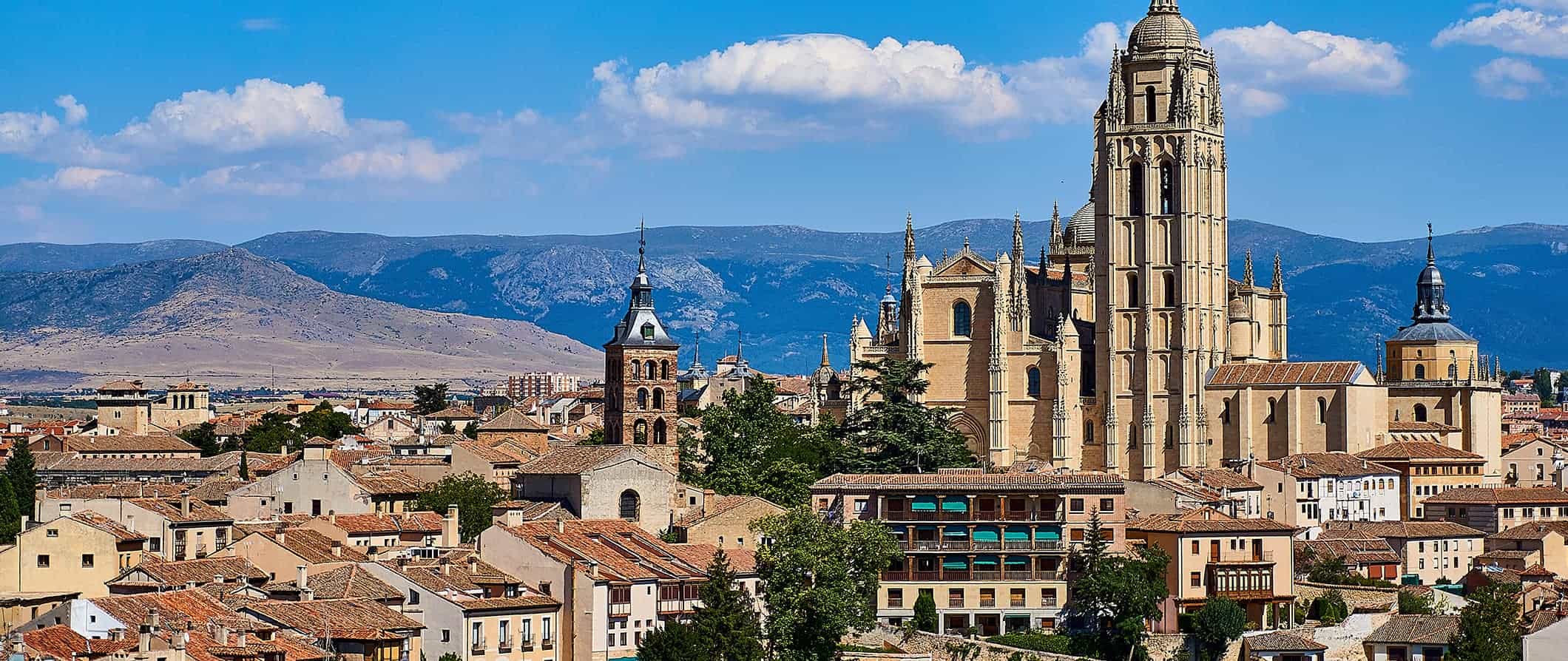
Spain is a country that moves slow. This is the land of the siesta. It’s a place for foodies, night owls, history buffs, religious pilgrims, and anyone not in a rush to do just about anything!
It’s a huge country with a lot of variety: Madrid and Barcelona are hip and energetic cities, Granada has a Moorish touch, Valencia has its own vibe, Catalonia has its own language and culture, and the Basque region (an autonomous community in northern Spain) feels like you’re in an entirely different country.
And, as an added bonus, Spain is an incredibly affordable place to visit. I’ve been traveling to the country for over a decade and I never break the bank while I’m there. It’s really easy to get by on a budget.
This budget travel guide to Spain can help you plan your trip, save money, and make the most of your time in this vibrant country.
Table of Contents
- Things to See and Do
- Typical Costs
- Suggested Budget
- Money-Saving Tips
- Where to Stay
- How to Get Around
- How to Stay Safe
- Best Places to Book Your Trip
- Related Blogs on Spain
Click Here for City Guides
Top 5 things to see and do in spain.
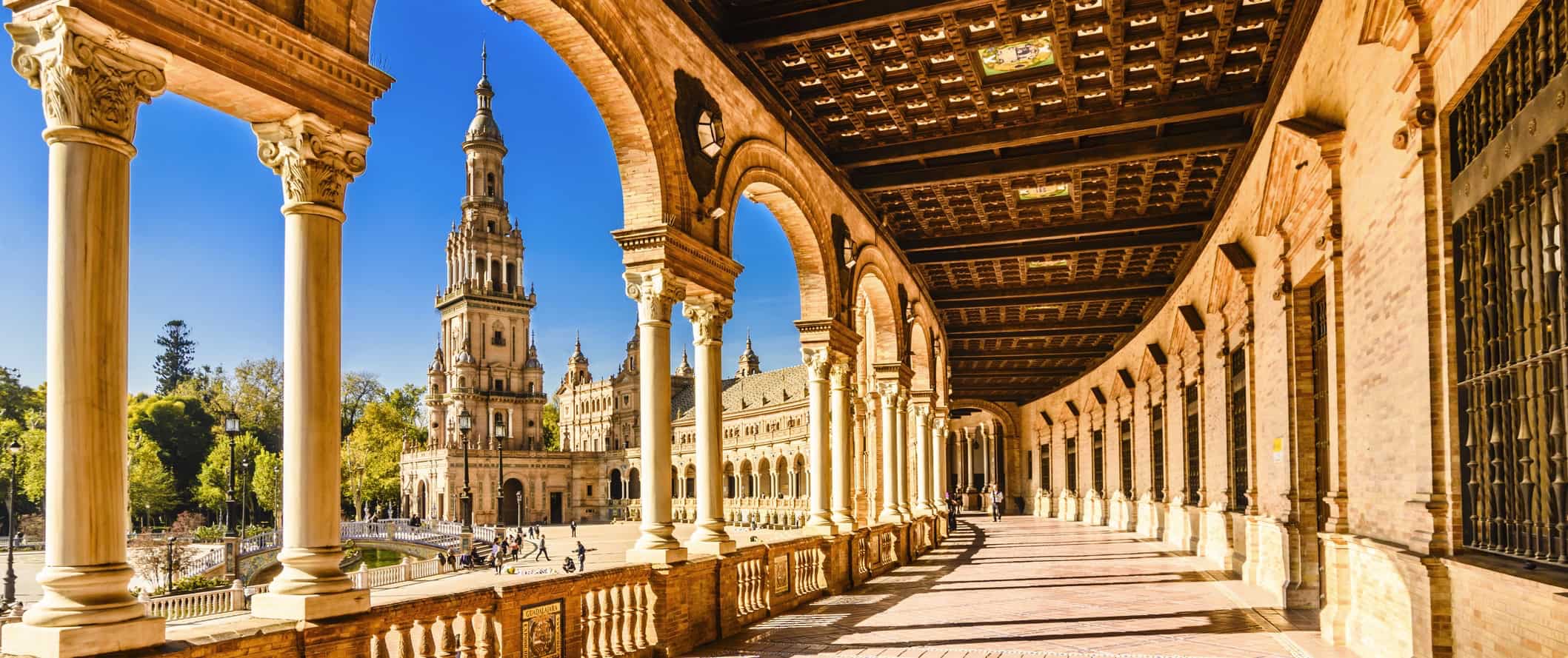
1. Enjoy Barcelona
Barcelona is famous for its all-hours partying, late-night meals, and historic streets. Embrace the nocturnal lifestyle and you’ll fit right in. Don’t miss the Museu d’Història de la Ciutat — it’s one of the best in Europe and contains the largest Roman excavation outside of Rome itself. Other highlights include the Picasso Museum (Museo Picasso), where you’ll need some time to peruse 5,000 or so of the artist’s works; the towering and iconic Basilica De La Sagrada Família , one of a number of striking buildings across the city by famous architect Antoni Gaudí; Barri Gòtic (the Gothic Quarter), where winding streets create a welcome maze built for wandering; and finding your way through the actual labyrinth that is the city’s oldest green space, Parc del Laberint d’Horta.
2. Explore the history of Granada
Granada is one of my favorite cities in Spain. It’s a place where culture, architecture, and ideas from North Africa and Europe collide in a unique way, and no trip to the south of Spain is complete without a visit. Don’t miss the Alhambra, a UNESCO World Heritage Moorish palace and fortress built in the 13th century, and the Fajalauza ceramic factory, which dates back to 1517 and still remains in the same family. There are also a number of cathedrals and monasteries, including the peaceful Monastery of San Jeronimo, with leafy cloisters and a lavish chapel (5 EUR). Be sure to watch a flamenco show while you’re here (they’re usually around 20 EUR) and visit a Moorish tearoom for mint tea (locals recommend it with plenty of sugar).
3. Wander Madrid
Madrid , the capital of Spain, is famous for its museums, tapas, and nightlife. Like Barcelona, this is a city that doesn’t get going until midnight, which makes for quiet mornings with empty streets if you want the city all to yourself. Make sure you visit Museo Del Prado, one of the largest art museums in the world (get skip-the-line tickets from Get Your Guide ), and the Royal Palace — with nearly 3,500 rooms, it’s the largest palace in all of Western Europe. Other highlights include the Temple of Debod (an Egyptian temple from the 2nd century BCE), El Retiro Park (a UNESCO World Heritage Site), the 15th-century Plaza Mayor, the city’s central square, and El Rastro market every Sunday — a mix of flea market finds, clothing, and jewelry.
4. Revel in La Tomatina
La Tomatina is an epic hour-long tomato fight that draws upwards of 20,000 people to the small town of Buñol (only 9,000 people live in the town itself). Started in 1945, this festival is held on the last Wednesday of August, and over 360,000 pounds of tomatoes are thrown during the event. It starts when water cannons fire, and it ends after exactly one hour. It’s the most amazing and messy festival I’ve ever been to! (Tip: Stay in Valencia for more overnight options.)
5. Discover Seville
Other things to see and do in spain, 1. lounge on the costa del sol.
Hang out on the beach and enjoy the laid-back lifestyle for which Spain is famous. This slice of southern Spain is renowned for its beaches, nightlife…and tons of tourists. That said, it’s still a fun place to eat great food in seaside restaurants (the region is famous for pescaito frito , or deep-fried fish), enjoy watersports in the clear Alboran Sea, drink sunset cocktails, and relax on beautiful beaches. Malaga is one of the go-to destinations on the coast, but I think there are better places further down, like El Bajondillo’s white sand beach and the incredible seafood surrounding La Carihuela beach. To beat the crowds, visit during the shoulder season. The weather will still be warm, but it won’t be as crowded.
2. See Valencia
Valencia is a pretty amazing town. Initially, I wasn’t attracted to Valencia — I simply went for the tomato fight in nearby Buñol (most participants use Valencia as their base during the festival). However, Valencia grew on me as I explored the city, as it makes for a quiet stop between Spain’s more lively cities. Originally a Roman colony and once the capital of Spain, it has delicious seafood, a unique local paella (rather than seafood, the recipe uses chicken, rabbit, and beans), a popular soccer club (Valencia CF), and a giant food market (Mercado Central) housed in an extravagant domed building that looks like a cathedral. It’s a cool city that straddles the past and future with historic streets, futuristic museums — there’s literally a museum focused on “enlightenment and modernity,” and an awesome seaside boardwalk that passes plenty of great tapas spots and the historic fishing district of Cabanyal.
3. Walk the Camino de Santiago
El Camino de Santiago, or The Way of St. James, is one of the most popular pilgrimage routes in the world. The path most people take, the French Way, runs from the border of France all the way to Santiago de Compostela in northwestern Spain. Stretching 800 kilometers (500 miles), you need around a month to complete the entire route. The mostly flat Camino is best done in May¬–June or September–October (July and August are both very busy and very warm). If you have the time, it’s a really great way to see the country and some of the less-visited areas of Spain. Of course, you can also walk sections of it if you just want to see what it’s like on a day hike.
4. Tour the islands
Spain has some of the most beautiful islands in all of Europe. Unsurprisingly, during July and August, they’re crowded and expensive, so try to avoid peak season. If you love beaches, surfing, hiking, or cycling, then be sure to hit up Gran Canaria, a UNESCO Biosphere Reserve filled with beautiful landscapes and wildlife, including dolphins. If you’re coming to Spain to party, a stop in Ibiza for its all-night clubs is a must. Other islands worth checking out are Tenerife (home to Teide National Park and the highest peak in Spain), Majorca (for turquoise water and medieval architecture), and La Palma (a certified Starlight Reserve). Ferries from Barcelona and Valencia run frequently from late spring to early summer. In the winter, ferries only run a few times a week.
5. Visit Gibraltar
Bordering Spain on the Iberian peninsula, Gibraltar has actually been an overseas territory of the United Kingdom since 1713. It’s known as “The Rock,” owing to the 426-meter-high (1,397-foot) limestone ridge that dominates the island — you can ride a cable car to the top, or get great views by climbing the 18th-century Mediterranean Steps. There’s an interesting mix of cultures here too, with influences from Britain, Spain, and North Africa. With sunny days year-round, views of two continents (Europe and Africa), wildlife galore (including Gibraltar monkeys, which are actually Barbary Macaques and the only population of wild monkeys in Europe). There are also plenty of sandy of beaches and caves to explore (St Michaels Cave is probably the most popular), it’s a small swatch of land with enough to see and do to make a short visit worthwhile.
6. Play in the Sierra Nevadas
This mountain range, located within Spain’s largest nathional park, is in southeastern Spain near the Mediterranean Sea. It’s the perfect place for summer hiking, winter skiing, and exploring small towns year-round. The area is one of the prettiest and most rugged regions in Spain and one of the better areas for outdoor activities in the country. There are plenty of trails ranging in length and difficulty, as well as the possibility for guided tours. Popular hikes include Mulhacen (6 hours), El Chullo (4-5 hours), and Pico de Veleta (4-5 hours). Lift passes for skiing at Sierra Nevada resort in the winter start at around 50 EUR per day.
7. Visit San Sebastián
Known as Donostia in Basque, San Sebastián is at the center of the Basque area of Spain. This place has killer nightlife and beaches (La Concha beach is the most popular), as well as loads of history throughout the city. It was founded in 1180 in the area that’s now become the Old Quarter. = The architecture — a cool mix of 16th-century Gothic churches, 19th-century mansions, and ultra-modern buildings — makes it one of the most beautiful and unique cities in all of Spain. For stunning views of the coast, hike up one of the 4 trails of Monte Urgull, located at the tip of La Concha. The city sees a fraction of the visitors compared to c Madrid or Barcelona so it’s much less crowded (and less expensive ). The regional Basque cuisine here is delicious, so be sure to take a food tour while you’re here.
8. Admire the Great Cathedral and Mosque
The Mezquita de Córdoba (Cathedral of Our Lady of the Assumption) is by far the most exquisite example of Muslim influence in Spain. Located in Córdoba just east of Seville, its giant arches, jasper columns, marble floors, richly gilded prayer niches, and the awe-inspiring domed shrine of Byzantine mosaics take you back to when Córdoba was under Muslim influence in the 12th century. Admission is 13 EUR and skip-the-line guided tours are 24 EUR.
9. Unwind in Salamanca
Salamanca seems to be in the middle of nowhere (it’s 2.5 hours northeast of Madrid by car), but it’s worth the detour for the history (it dates back to the Celtic era), and its historical Old Quarter which is a UNESCO World Heritage Site. The university town has a mix of small-town atmosphere, great nightlife, and plenty of backpackers. In the old quarter, join the other tourists trying to spot the frog carved into the 16th-century university facade — said to bring professional success. The main square, Plaza Mayor, is one of the largest in Spain and is great for soaking up the city, and the nearby cathedral is gorgeous. It’s actually two cathedrals —an Old, from the 12th and 13th centuries, and New, from the 16th — joined together.
10. Hike the Pyrenees
The majestic mountain chain that walls off France is laced with medieval villages, high mountain walking trails, and great skiing. It’s also the traditional start of the Camino (see #3 above). You can hike through the Pyrenees on one of three established routes, but it takes most people almost two months to complete the entire trek (choose spring or fall, summer will be extremely hot). Of course, you can also just hop on the Camino for a single-day hike or weekend hiking trip along one of the moderate routes. If you don’t want to go solo, you can take a full-day hiking tour of the Pyrenees from Barcelona with Get Your Guide .
11. Visit the Guggenheim Museum
One of the most famous museums in the world, the Guggenheim Museum Bilbao (a port city in northern Spain) always has some interesting exhibitions on modern art (including a permanent sculpture, “Snake,” that’s made of hot-rolled steel and spans more than 100 feet long!). There is also the iconic (and giant) spider sculpture outside the museum, and pieces by Rothko hang inside. Even if you’re not a modern art fan (I personally don’t love it), it’s still worth stopping by because the building is art itself. Frank Gehry, arguably one of the most famous living architects, designed it to have an eye-catching, undulating style, and the grand atrium alone is worth a visit. Admission starts at 16 EUR.
12. Explore Basque Country
Basque Country is an autonomous region in Spain, a place with its own unique culture and heritage. (The Basque people inhabited the area before Spain became a nation.) Located in the northeast corner of the country, you’ll notice the cultural and linguistic differences as soon as you step foot in the region. If you’re into off-the-beaten-path locations, be sure to tour Basque Country, which offers coastal areas, small towns, and mountains. Don’t miss the 153-year-old La Bretxa market in San Sebastian (open every day except Sunday), the Gothic-style St. Mary’s Cathedral in Bayonne, and Le Grand Stroll in Biarritz while you’re here. (The start of the Camino passes through the area as well.) La Rioja wine region can also be found in Basque Country — try its famous drink, a white wine called txakoli . Expect lots of seafood, lamb dishes, and pintxos (Basque tapas).
For more information on specific cities in Spain, check out these guides:
- Barcelona Travel Guide
- Granada Travel Guide
- Madrid Travel Guide
- Seville Travel Guide
- Valencia Travel Guide
Spain Travel Costs
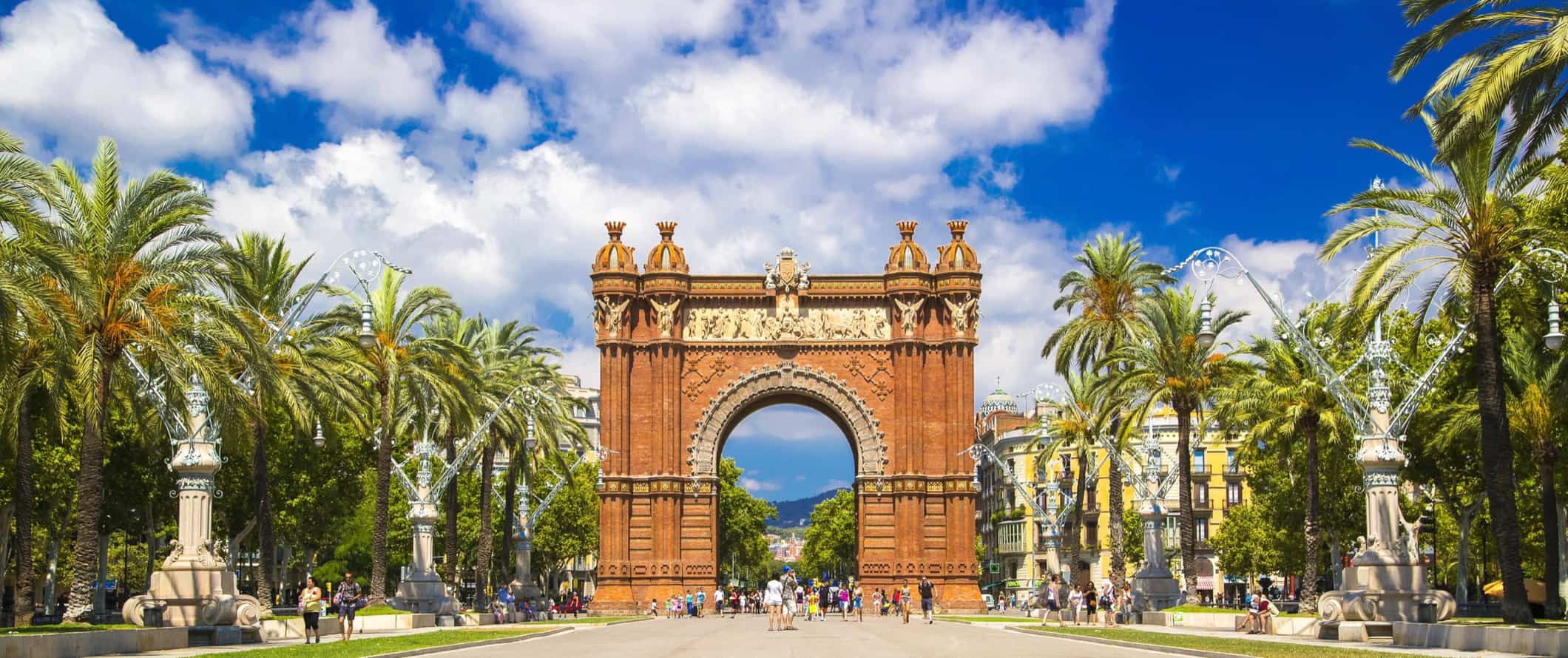
Budget hotels begin around 125 EUR for a twin or double and go up from there. Prices are slightly lower outside of the major cities and tourist areas but are about 20-30% higher during peak season. For larger cities during the summer high season, expect to spend closer to 200 EUR or more a night.
Airbnb is common in most major cities, with a private room starting around 60 EUR per night. For an entire home or apartment, expect to pay at least 120 EUR per night (often double that in the big cities or during peak season).
For those traveling with a tent, there are hundreds of campsites across Spain. Campground costs around 20 – 40 EUR per night. They can be as low as 5-10 EUR for a basic tent plot without electricity, while other costlier sites (around 50 EUR per site) often include extra luxuries like a pool, electricity, and Wi-Fi.
Food – Spain has a strong food culture. Meals can last for hours, and dinner often isn’t served until after 8 p.m. Each region in the country has its own local dishes and food culture, but there are some common favorites, like paella (originally from Valencia), gazpacho, churros, jámon ibérico (cured pork), patatas bravas (fried potatoes with sauce), gambas al ajillo (garlic shrimp), and tortilla (Spanish omelet).
You can usually find tapas and sandwiches for 5–10 EUR. Assembling a meal of tapas at a casual bar usually costs around 15-20 EUR, including a glass of wine. Cheap fast food (think McDonald’s) costs around 9 EUR for a combo meal. Chinese food is around 10 EUR for a main dish, while pizza costs 10-14 EUR.
Beer is 3–4 EUR, a glass of wine is 2-4 EUR, and a latte/cappuccino is around 2 EUR. Bottled water is about 1.50 EUR. (In general, tap water is safe to drink in Spain.)
A decent casual restaurant meal costs around 25-30 EUR with a drink. If you go out for paella, drinks, or appetizers, plan to spend around 35-45 EUR for a meal.
Spain has a lot of expensive restaurants if you want to splash out. Meals at finer establishments begin around 55 EUR.
If you plan on cooking your own food, groceries cost around 45-65 EUR per week. This gets you basic staples like pasta, rice, seasonal produce, and some meat or seafood. You can find the cheapest (and freshest) produce and meat at local markets.
Backpacking Spain Suggested Budgets
On a backpacking budget of 90 EUR per day, you can afford to stay in a hostel dorm or private Airbnb room, cook most of your meals, limit your drinking, take public transportation to get around, and do mostly free activities like free walking tours and relaxing in the parks. Add at least 20 EUR per day to your budget if you plan on drinking or partying a lot.
On a mid-range budget of around 215 EUR per day, you can stay in a private room in a hostel, or a 2-star budget hotel, eat out at inexpensive restaurants for most meals, have a few drinks, take the occasional taxi, and do more paid activities like cooking classes and museum visits.
On a “luxury” budget of 350 EUR or more per day, you can stay in a nicer hotel or entire Airbnb apartment, eat out regularly, drink more, take more taxis, and enjoy more guided tours. This is just the ground floor for luxury though. The sky is the limit!
You can use the chart below to get an idea of how much you need to budget daily. Keep in mind these are daily averages — some days you spend more, some days you spend less (you might spend less every day). We just want to give you a general idea of how to make your budget work. Prices are in EUR.
Spain Travel Guide: Money-Saving Tips
Overall, Spain is pretty affordable. While accommodation costs in most touristy as well as larger cities have risen greatly in the last few years, everything else is still affordable. Individual city guides have more specific information on how to save in each city, but here are some general ways to save money while traveling around Spain:
- Get the menu of the day – Most restaurants offer a cheap and filling “menu of the day” ( menu del dia during lunch for around 10–15 EUR per person. They are a good way to save money while enjoying some delicious Spanish food. Wine or water are generally included, too. Look for more crowded spots — that’s how you know the food is good. Skip eating out for dinner — it’s too expensive!
- Eat free tapas – In some cities (like Granada), you can find bars where free tapas are given out when you order drinks. Bounce around the bars to eat cheap while enjoying a few drinks.
- Stay with a local – Couchsurfing is a great way to save money on accommodations while also getting some insights from locals. You might have better luck in the larger cities, but be sure to book early as the major cities also see the most requests.
- Take the bus – While the train system is fast, it’s expensive, with high speed trains double (or more) the cost of buses. If you have the time and want to save money, take buses to get around the country. It will take longer but, if you’re on a budget, it will be worth it. And look at booking your tickets online and in advance — it can save you money.
- Get a city pass – Most of the major cities have multiple museums, attractions, and activities worth checking out. Buying a city pass — like the Madrid City Card (from 8.40 EUR) or Malaga–Costa Del Sol Sightseeing Pass (starting at 14 EUR) — can save you money on these activities and also get you free transportation. These passes will save you a lot of money if you’re planning on visiting the major sights.
- Ride a bike – Tourists can use public bikes in cities such as Madrid and Seville for a daily or weekly fee. Take note, Barcelona’s red city bikes (Bicing) are for residents only, but you can find shops that offer daily or weekly bike rentals.
- Use BlaBlaCar – This app connects you with drivers who have room in their cars for additional passengers. Drivers are vetted and verified, so it’s a cool way to get out of stuffy trains and buses, meet interesting characters, and take a mini road trip. It’s one of my preferred methods of travel for medium- and long-distance trips.
- Bring a water bottle – The tap water here is safe to drink, so bring a reusable water bottle to save money and reduce your plastic use. Spain now offers more water fountains and bottle-filling stations than in the past. LifeStraw is my go-to brand as their bottles have built-in filters to ensure your water is always clean and safe.
Where to Stay in Spain
Spain has plenty of budget-friendly hostels and hotels all around the country. Here are some of my recommended places to stay:
- HelloBCN Hostel (Barcelona)
- Hotel BestPrice Gràcia (Barcelona)
- OK Hostel (Madrid)
- Petit Palace Puerta del Sol (Madrid)
- The River Hostel (Valencia)
- Red Nest Hostel (Valencia)
- Oasis Backpacker’s Hostel (Seville)
- Onefam Centro (Seville)
- ECO Hostel (Granada)
- Hostal Antares (Granada)
For more places to stay, check out the city specific destination guides.
How to Get Around Spain
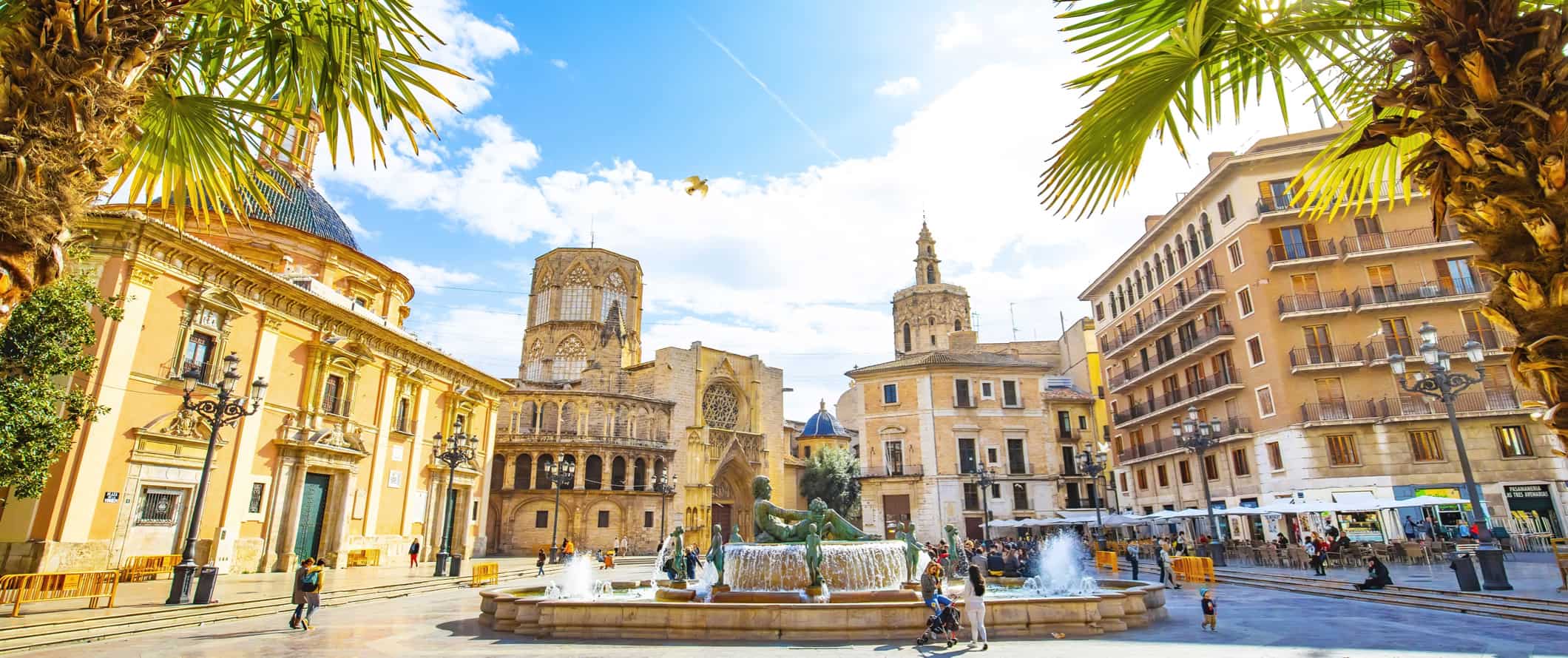
Bus – The bus is the cheapest option for getting between cities in Spain. FlixBus has tickets starting as low as 6 EUR. Most buses come with outlets and free Wi-Fi. A 9–hour trip from Madrid to Barcelona starts from about 35 EUR, while the 4–hour trip between Seville and Granada costs around 25 EUR. Alsa is another popular bus company for travel throughout the country.
Trains – RENFE is the national rail line in Spain. High-speed trains are more expensive, but you can travel between Madrid and Barcelona in just 2.5 hours. Even on the more expensive high-speed train, however, you can find tickets from Madrid to Barcelona for as low as 55 EUR during off peak times in the offseason. The trip from Madrid to Seville is around 2.5 hours and costs 35 EUR, while Madrid to Valencia is just under 2 hours and costs 30 EUR.
To find routes and prices for trains around Spain (and Europe), use Trainline .
A Eurail Pass , which allows travelers to explore Europe by providing a set number of stops in a specific time period, might also be a good option depending on your plans. For more information, here’s a detailed breakdown of how Eurail passes work and can save you money .
Flying – If you’re pressed for time and are looking to hop from one city to the next, a budget airline. You can find really cheap fares on most routes.
However, be aware that you have to pay for all the extras on these cheap flights (such as checked baggage, picking your own seat, etc.) So, while flights are cheap (Madrid to Barcelona can be found for as little as 65 EUR round trip), the little expenses add up. And when you factor in getting to/from the airport, most flights really aren’t much faster than the train.
Car rental – Car rentals can be found for as little as 25 EUR per day for compact vehicles when booked in advance. Make sure to check if the car is standard or automatic when reserving. Renters will need an International Driving Permit prior to book. The minimum age for renting a car is 21. For the best rental car deals, use Discover Cars .
Ridesharing – If your schedule is flexible, use a ridesharing service and catch rides with locals between cities. Drivers are verified and it’s perfectly safe. BlaBlaCar is the biggest company.
When to Go to Spain
Spain is lovely year-round, but the peak season — meaning, busiest and most expensive— is in the summer, from June to August. Popular destinations like Barcelona and Ibiza experience a massive influx of tourism — so much so that Barcelona’s residents have started clamping down on overtourism. Accommodations in the larger cities require serval months of advance booking is summer, and small shops may be closed in August for family holidays. The weather is fabulous this time of year, with high temperatures well into the 30s°C (90s°F)
The temperature in Spain doesn’t often drop too low, with winter temps between 4-10°C (40-50°F) country-wide. However, Northern Spain does sometimes experience snowfall — especially in the mountainous areas. While I wouldn’t aim to visit in the winter, if you’re already in Europe, this is going to be one of the warmer destinations on the continent, especially in the south. Madrid and Barcelona have plenty of holiday festivals in December and early January for Christmas and Three Kings Day. If you are in Spain during the holidays, visit a bakery to try traditional, seasonal desserts.
The shoulder seasons (spring and autumn) are great times to visit. Tourist sites are less congested (think Gaudi attractions in Barcelona)and prices are a bit cheaper, especially accommodations in Barcelona or Madrid. Temperatures are pleasant, although it’s not exactly beach season. Beach destinations like Ibiza and Mallorca tend to get very quiet during this time, but there is still plenty to see and do around the rest of the country. If you plan on outdoor activities or hiking the Camino de Santiago, this is the time of year to do it.
How to Stay Safe in Spain
Spain is pretty safe to visit. Violent attacks are uncommon, and the country is safe for solo travelers However, petty crime is really widespread and pickpocketing is very common in the larger cities, especially near major tourist sites (such as La Rambla in Barcelona) and on public transportation. Always keep your valuables secure and out of sight when on public transportation and when out and about. The thieves here are incredibly quick here. Report thefts to the local police, or ask your hotel or hostel how to file a report.
Be extra careful in Barcelona, especially in high season, where people may try to snatch your phone on the street or grab your stuff in crowded subways (pickpocketing is not as bad elsewhere in Spain). Also, never leave your backpack, phone, or laptop out and unsecured when at a cafe or restaurant. They can disappear in the blink of an eye.
Scams are also very common, especially in the larger cities (not that common though in smaller cities). Keep an eye out for kids in groups who might try to distract you before lifting your wallet, as well as people who might offer to “help” carry your luggage or take your photo, only to expect a hefty tip as thanks. You can read about common travel scams to avoid here .
Solo female travelers should generally feel safe here. However, the standard safety precautions apply (always keep an eye on your drink at the bar, never walk home alone at night while intoxicated, etc.). Many hostels also have female-only dorm rooms. For specific tips on staying safe, check out one of the many solo female travel blogs on Spain. They’ll be able to provide specific advice that I, a man, can’t.
If you experience an emergency, dial 122 for assistance.
Always trust your gut. Make copies of your personal documents, including your passport and ID, and keep them separate from your originals. When you’re walking around, take minimal cash and one form of ID.
The most important piece of advice I can offer is to purchase good travel insurance. Travel insurance protects you against illness, injury, theft, and cancellations. It’s comprehensive protection in case anything goes wrong. I never go on a trip without it as I’ve had to use it many times in the past. You can use the widget below to find the policy right for you:
Spain Travel Guide: The Best Booking Resources
These are my favorite companies to use when I travel. They consistently have the best deals, offer world-class customer service and great value, and overall, are better than their competitors. They are the companies I use the most and are always the starting point in my search for travel deals.
- Skyscanner – Skyscanner is my favorite flight search engine. They search small websites and budget airlines that larger search sites tend to miss. They are hands down the number one place to start.
- Hostelworld – This is the best hostel accommodation site out there with the largest inventory, best search interface, and widest availability.
- Booking.com – The best all around booking site that constantly provides the cheapest and lowest rates. They have the widest selection of budget accommodation. In all my tests, they’ve always had the cheapest rates out of all the booking websites.
- HostelPass – This new card gives you up to 20% off hostels throughout Europe. It’s a great way to save money. They’re constantly adding new hostels too. I’ve always wanted something like this and glad it finallt exists.
- Get Your Guide – Get Your Guide is a huge online marketplace for tours and excursions. They have tons of tour options available in cities all around the world, including everything from cooking classes, walking tours, street art lessons, and more!
- The Man in Seat 61 – This website is the ultimate guide to train travel anywhere in the world. They have the most comprehensive information on routes, times, prices, and train conditions. If you are planning a long train journey or some epic train trip, consult this site.
- Rome2Rio – This website allows you to see how to get from point A to point B the best and cheapest way possible. It will give you all the bus, train, plane, or boat routes that can get you there as well as how much they cost.
- FlixBus – Flixbus has routes between 20 European countries with prices starting as low 5 EUR! Their buses include WiFi, electrical outlets, a free checked bag.
- SafetyWing – Safety Wing offers convenient and affordable plans tailored to digital nomads and long-term travelers. They have cheap monthly plans, great customer service, and an easy-to-use claims process that makes it perfect for those on the road.
- LifeStraw – My go-to company for reusable water bottles with built-in filters so you can ensure your drinking water is always clean and safe.
- Unbound Merino – They make lightweight, durable, easy-to-clean travel clothing.
- Top Travel Credit Cards – Points are the best way to cut down travel expenses. Here’s my favorite point earning credit cards so you can get free travel!
- BlaBlaCar – BlaBlaCar is a ridesharing website that lets you share rides with vetted local drivers by pitching in for gas. You simply request a seat, they approve, and off you go! It’s a cheaper and more interesting way to travel than by bus or train!
- Take Walks – This walking tour company provides inside access to attractions and places you can’t get elsewhere. Their guides rock and they have some of the best and most insightful tours in all of Spain.
Spain Travel Guide: Related Articles
Want more info? Check out all the articles I’ve written on Spain travel and continue planning your trip:

The 7 Best Hotels in Madrid
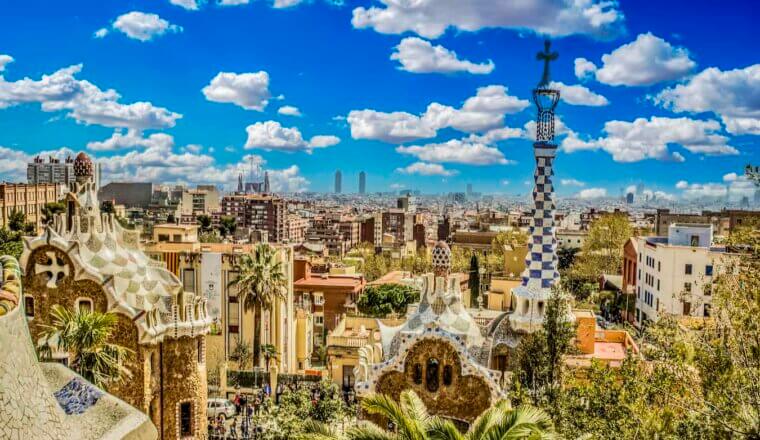
The 7 Best Hotels in Barcelona


The Best Walking Tours in Barcelona
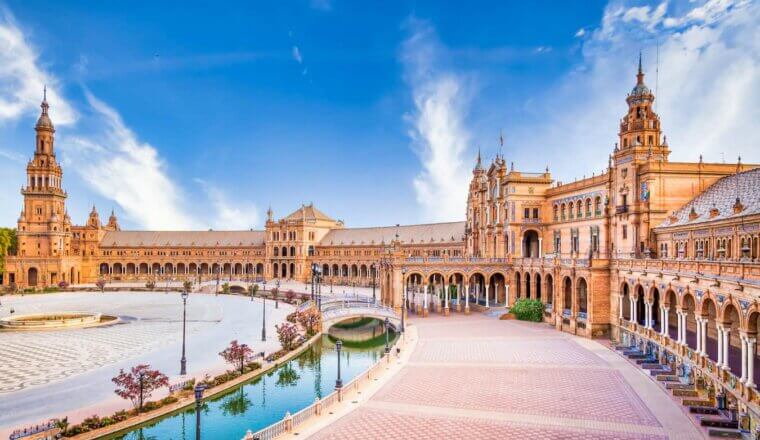
The Best Walking Tours in Seville
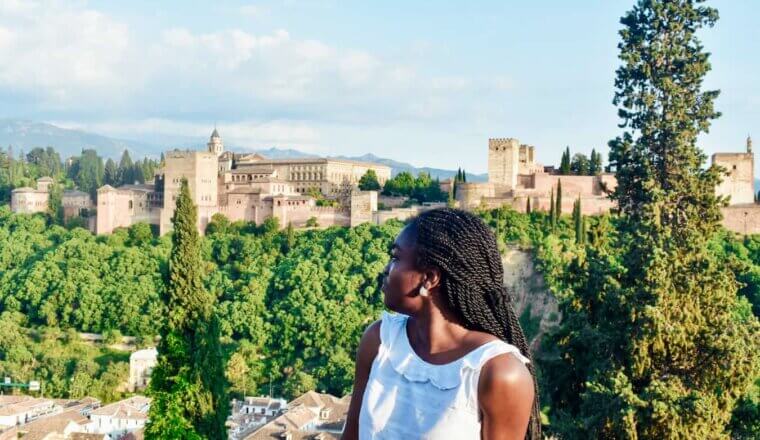
The Perfect 3 Day Granada Itinerary
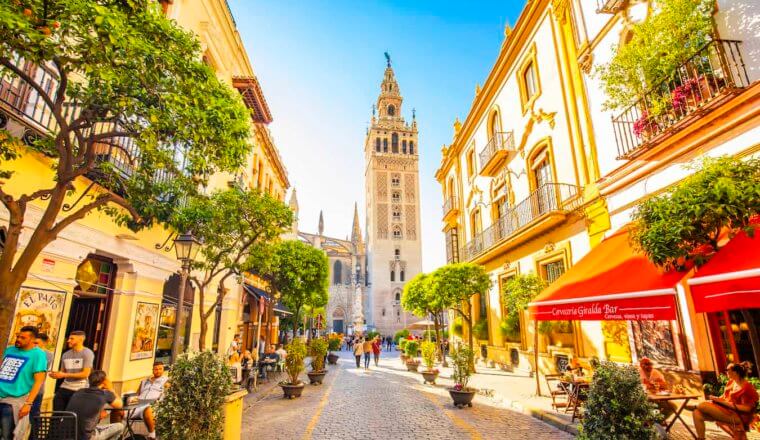
The 7 Best Hostels in Seville
Get my best stuff sent straight to you, pin it on pinterest.
- Where To Stay
- Transportation
- Booking Resources
- Related Blogs
Spain's official tourism website

- #SLOWTRAVELSPAIN CAMPAIGN
- SlowTravelSpain (12)
- SlowTravelSpain (9)
- SlowTravelSpain (6)
- SlowTravelSpain (7)
- SlowTravelSpain (1)
- SlowTravelSpain (2)
The Spanish Tourist Office is delighted to launch a Slow Travel campaign entitled #SlowTravelSpain.
The #SlowTravelSpain campaign, will highlight sustainable forms of travel in Spain and its islands, recognising the importance of forming a connection with local people and cultures when travelling whilst also lessening harmful impact on communities and the environment. The campaign will focus on geographical diversification and aim to showcase low-impact activities and journeys that fit within the slow travel theme.
Taking part in low impact activities, exploring quieter routes and travelling with seasonality in mind will provide visitors to Spain with a more authentic experience of the country. In the upcoming months Spain’s social channels will showcase different forms of slow travel through its regions, encouraging lovers of the country to explore its lesser-travelled paths.
Making the choice to slow travel through Spain could mean choosing to travel along the well-connected network of trains, a sustainable yet rewarding option, giving the opportunity to see the lush landscape pass by and discover parts of the country not reached by plane. Alternatively, it could mean participating in responsible activities; From cycling through the mountains of la Sierra Nevada and exploring the Pyrenees in the summer sunshine to hiking through one of the 16 National Parks and diving in the Biosphere Reserves along its coastline.
How you can get involved
In the upcoming months the Spanish Tourist Office will be monitoring the hashtag #SlowTravelSpain on its Facebook ( Spain.info.gb ) and Twitter ( Spain_inUK ) accounts to track the posts of people's slow travel experiences across Spain, and to award spot prizes to some of the most impressive entries. When posting photos and videos of low impact activities, quieter routes or other slow travel related topics in Spain, please use the hashtag #SlowTravelSpain to share your content.
How brands, bloggers and influencers can get involved
The Spanish Tourist Office is also looking for brands, bloggers and influencers who have recently visited or are planning a trip to Spain and would like to get involved with this campaign. The aim of the campaign is promote slow travel experiences in Spain and engage current followers with the sustainable and responsible travel options in Spain. The campaign would also seek to create new shareable content across multiple digital channels (blogs, YouTube) to be shared on Spain’s channels. To register your interest in receiving support from the Tourist Office for your content please complete the following registration form .
Please find graphics for the campaign here .
For further information on Spain as a visitor destination, please visit www.spain.info as well as the Facebook ( Spain.info.gb ) and Twitter ( Spain_inUK ) accounts.
For enquiries, please email [email protected] .
Related stories
The winners of spain’s sustainable media awards 2024, ade adepitan appointed as ambassador for spain for all, accessible travel experiences in spain, share this page.
- Newsroom Spain
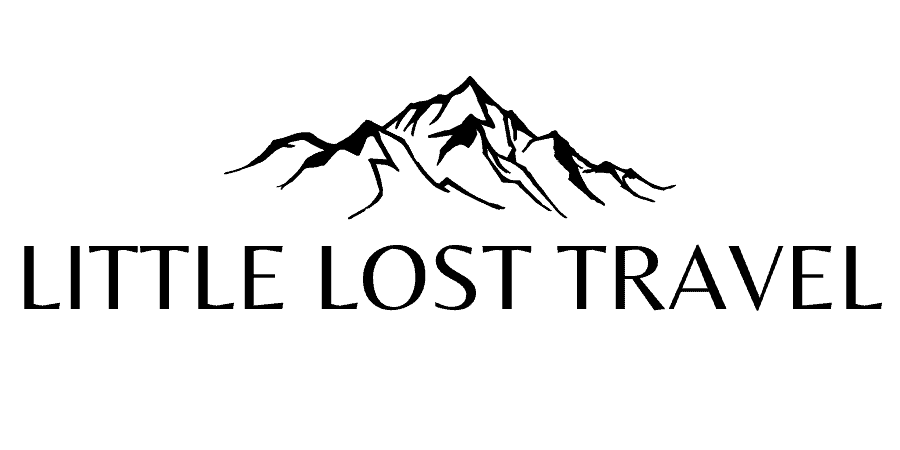
An Easy Slow Travel Guide to Mastering the Art of Experiencing More
Posted by Francesca Brooking | Sustainable Travel | 2

Curious about slow travel and wondering how to do it? This detailed slow travel guide features tips and ideas to help you revolutionise the way you travel.
Itineraries longer than our arms, endless tickets to book, queues at attractions, and underlying stress simmering below the surface… we’ve all been there.
Holidays are supposed to be a relaxing break from our busy lives but more often than not we return home needing a holiday FROM our holiday.
But what if you could experience more without running yourself ragged? What if you could travel in a way that benefits you and the place you’re visiting? What if you could be a sustainable traveller but still feed your wanderlust?
The answer is slow travel.
This comprehensive slow travel guide tells you how to experience more while doing less on holiday.
What is slow travel?

To put it simply, slow tourism is a form of travel which involves ditching planes for overland transport such as trains, walking, cycling, or boating.
On a deeper level, slow travel is a mindset focused on human connections and authentic experiences rather than viewing travel as a commodity.
Slow travellers take their time to experience a destination instead of just passing through it. They seek real, first-hand connections with the people who live there rather than encounters designed for the tourist’s benefit at popular attractions.
The aim of slow travel is to see MORE by doing LESS. This might seem counterintuitive but it’s the quality of the experiences that matter, not the quantity.
For example, rather than cramming all of Italy into a two-week itinerary, you spend a week or two getting to know Tuscany.
Slow travel is sustainable travel. It gives you the opportunity to go off the beaten path, contribute to the local economy, and enjoy the journey rather than focusing only on the destination.
It benefits you too. You feel more rested and fulfilled, and with a deeper understanding of the place you’ve visited.
What are the origins of slow travel?

Slow travel has its roots in the slow food movement which ignited in Italy during the 1980s to fight against McDonald’s opening near Rome’s Spanish Steps.
The fast food chain represented all that was wrong with the way life was speeding up alongside people’s dwindling interest in the food they were eating.
Officially founded in 1989 in Piedmont by Carlo Petrini, Slow Food International sought to rekindle the appreciation for the small, local producers, chefs, artisans, and farmers that make Italy’s food so renowned.
The same principles behind the slow food movement form the basis of slow travel too. Just like slow fashion and slow living in general.
Who is slow travel for?
First, let’s bust some misconceptions. Slow travel is not just for retirees or digital nomads with buckets of time and money to travel.
Slow travel suits everyone young and old from budget backpackers to luxury travellers as well as families, couples, and groups. There are no restrictions!
Travelling slowly isn’t about the amount of time you have, it’s about what you DO with that time. Your five-day trip can still count as slow travel.
The only requirements to slow travel are being open, going with the flow, and enjoying the journey as much as the destination. I’ll share more about how to do this later.
The benefits of slow travel

Here are some top reasons why the slow travel movement is so important.
You experience local culture
Slow travel invites you to interact with the local community away from the tourist attractions.
You can get to know the local culture by taking part in a traditional activity or event, learning the language or finding the best restaurant that tourists don’t know about.
You get to see what it’s like to live there and meet people with fascinating stories to tell.
Plus, getting an authentic cultural understanding helps bust prejudices or misconceptions about a place. Read my guide to taking ethical travel photos to find out more.
It benefits the local economy
The longer you stay in a place, the more money you will spend on shopping, days out, and buying souvenirs from local businesses etc.
In other words, your hard-earned cash goes directly into the local economy rather than the pockets of large international companies – otherwise known as tourism leakage.
A sustainable way to travel
Slow tourism is more sustainable because your positive contributions to the local area outweigh the negatives.
You support local businesses, go off the beaten path, use public transport, avoid tourist hotspots, and travel at a slower pace rather than rushing around.
It lowers your carbon footprint
The faster you travel (flights, driving etc) the bigger your carbon footprint. The slower you go (hiking, cycling or staying put in a place for longer), the lower your impact.
That’s not to say you can’t fly at all as a slow traveller. You should just make sure to use lower-impact transport when you’re there.
Slow travel relies most on public transport which requires less fuel and has fewer carbon emissions than planes.
For example:
- A return flight from London to Amsterdam is 136kg per passenger
- A return train journey from London to Amsterdam is 27.2kg per passenger
A note on cars: driving isn’t always more carbon-efficient than flying. Your carbon footprint varies depending on the number of passengers, the car’s model, and what it runs on.
Slow travel saves money

Since you’re spending longer in places, it’s easier to budget. You don’t have to pay for expensive plane tickets or tourist attractions.
Instead, you live more like a local by eating at cheaper restaurants, cooking at your accommodation, and using public transport.
You see more
Slow travel asks ‘what do you want to experience?’ rather than ‘where do you want to go?’ By spending longer in a region or place, you start to really see it.
Perhaps you’ll have a chance to see market day or experience a local custom? Maybe you’ll find a new favourite coffee shop or discover something that’s not on your original itinerary!
Travel shouldn’t be about following a cookie-cutter itinerary of the next person. It’s an experience uniquely tailored to you. Giving yourself the time to experience a place makes it unique to YOU.
You meet more people
It’s a given that if you’re going to spend longer in a place, you’re going to meet more people – and that’s exactly what travelling should be about!
It reduces overtourism
Slow travel reduces the impact of overtourism because it’s less about chasing the thrill of a ‘must-see’ and more about authentic experiences.
As a slow traveller, you’re not following the well-worn tourist trail to the top attractions. Instead, you stay in fewer places, avoid expensive tourist hotspots, and go off the beaten path.
This alleviates the pressures of overtourism in busy places and gives money to overlooked areas.
You feel less like a tourist
When you travel at a slower pace, you see what the destination is like from a local’s point of view.
You might become more familiar with the culture and infrastructure (like how the public transport system works) or learn some of the language.
In other words, you feel more connected to the place and its people!
It’s better for you
Our daily lives are hectic enough without making our holidays busy too. Slow travel allows you to enjoy your trip rather than cramming as much as you can into your itinerary.
Trust me, you’ll feel much more refreshed when you arrive home from your slow travel holiday.
This is what travel is all about!
Slow travel reminds you why you love to travel in the first place. It takes you further than what you read online or see on social media for an immersive experience that’s unique to you.
Ecotourism and slow travel

Ecotourism and the slow travel experience go hand in hand because they both benefit small off-the-beaten-path communities in an eco-friendly way.
Like ecotourism, slow tourism helps to develop our cultural awareness and understanding of nature in the places we travel.
Many experiences rooted in ecotourism are already examples of slow travel. Read my list of ecotourism activities to see the connection.
The best ways to travel slowly
These are some of the best slow travel activities:
Backpacking
Typically associated with twenty-year-olds travelling on a budget (most likely in Southeast Asia), backpacking is an easy way to travel slowly too.
You move slowly from one place to the next using public transport as it’s often the cheapest way to travel.
Perhaps you’ll stay in a hostel for a few weeks at a time, maybe working for six months and travelling for the next six? There’s no rush.
Housesitting
What if you could get all your accommodation for free when you travel? Housesitters take care of a homeowner’s property and pets while they’re away in exchange for free accommodation.
You do basic cleaning, water house plants, feed the pets, and collect any mail for the agreed-upon length of time. It’s a great way to get to know the area and live like a local.
Always go through a proper website like Trusted Housesitters for your safety.
Remote working
It’s never been easier to work from anywhere and adopt the digital nomad lifestyle. Remote working gives you the chance to settle down and experience the place for longer. You live there rather than travel through it.
While being a digital nomad in itself is legal, digital nomads tend to travel on tourist visas which is a legal grey area. You’re not supposed to work on a tourist visa.
However, an increasing number of countries are launching their own digital nomad or remote working visas.
A note on renting: If you decide to stay in an Airbnb, try to avoid areas that have housing issues. Many communities are being priced out of their homes or can’t find anywhere to move because of holiday rentals.
Cycling holidays

Cycling is one of the most sustainable ways to travel since carbon emissions are reduced to a minimum.
It allows you to slow down and take in your surroundings. Plus, it’s great exercise, gives you lots of fresh air, and a digital detox!
Make sure you’re comfortable on a bike and you’re physically able to handle the long days of cycling. That doesn’t mean you have to be a fitness fanatic though. You can go at your own pace and watch your stamina grow each day.
Create your own cycling itinerary or find guided and self-guided tours at Skedaddle, Much Better Adventures, and H+I Adventures.
Train travel
Many new train routes and sleeper trains are cropping up, making it easy to travel around mainland Europe without flying.
Travelling by train invites you to enjoy the journey. There are few luggage restrictions, no extra waiting around at airports, and you can sit back and watch the changing geography unfurl outside your window.
Trains in Europe are affordable and if you opt for a sleeper, it saves you the cost of a hotel room for the night. These trains are modern and comfortable too with sleeping arrangements to suit your budget.
See the Man in Seat 61 for train route itineraries in meticulous detail. I hope to take the train from London to Italy one day!
Homestays
Where better to live like a local than with a local? During a homestay, you stay with a local family in their home as their guest.
Homestays give you the opportunity to stay in places that might not have hotels or other tourists. It’s also a great way to try home-cooked dishes, get travel tips, and support the local economy.
Stay safe by booking your homestay through a legitimate platform. Homestay is an obvious one. Another good option is Workaway if you want to combine a homestay with volunteering or a working holiday.
Multi-day hikes
Hiking is a fantastic way to connect with the place you’re travelling through. Plus, it’s easy to build a hiking itinerary to suit your interests.
You can hike through the countryside, passing through small towns and villages as you go. Stay in hotels or go camping, incorporate the history of the local area or make the focus food and wine.
A hiking trip can be as long or as short as you like. Remember to follow the Leave No Trace principles and ensure you’re physically up to the challenge you’ve given yourself.
Slow travel tours
Intrepid Travel runs guided small group tours all over the world and each one is led by a local guide, focuses on local experiences, and incorporates homestays throughout.
If you prefer the self-guided approach, Byway Travel creates bespoke itineraries without a single flight involved.
Original Travel uses local concierges to help you get an authentic experience of the place you’re visiting. For more tour ideas, read my guide to the best sustainable travel companies.
Off the beaten path
Going off the beaten path is a key part of slow travel. This means avoiding the well-worn tourist trails and opting for lesser-known places that appreciate your custom more.
It’s not about visiting places that are unsafe. You’re choosing regions that tourists don’t know about.
Think of alternative destinations to the most popular places. For example:
- Riomaggiore instead of Cinque Terre in Italy
- Foelgandros instead of Santorini in Greece
- Choquequirao instead of Machu Picchu in Peru
- Doubtful Sound instead of Milford Sound in New Zealand
- Lombok instead of Bali in Indonesia
You get the idea!
Farm-to-table experiences
Farm-to-table experiences mean getting to know where your food comes from in the local area. Absolutely no food air miles and no fast food!
So what does a farm-to-table experience look like? How about seeing how halloumi is made in a Cypriot village before eating it at the restaurant around the corner?
Or perhaps doing a wine trail tour in the Central Otago region of New Zealand’s South Island? The possibilities are endless (and utterly delicious!).
Easy slow travel tips

Here are some quick tips to help you master the art of slow travel:
Leave gaps in your itinerary
Don’t try to plan every moment of your trip. Allow yourself to go with the flow and see where it takes you.
Have a few must-dos in place but be flexible in case you want to move things around. Leaving gaps in your itinerary will allow you to stay curious about the place you’re visiting.
Pay attention to how you’re feeling too. Don’t fancy doing that walking tour? Don’t! It’s your trip.
Choose alternative ways to travel
If you’re travelling closer to home, look at alternatives to flights. We’re more connected than ever and it has never been easier to get the train rather than fly.
Similarly, when you’re travelling, use public transport rather than flying to multiple places.
Look for authentic experiences
The best way to see below the surface of a destination is to ask the locals for recommendations. Start with the local Visitor Centre or ask the reception staff at your hotel.
Avoid big tourist attractions which will only have you fighting through crowds just to get a photo. Most of the time, they just aren’t worth the hassle.
Slow travel destinations and holidays

Any country in the world can be a slow travel destination!
Here’s a quick list of some of the easiest countries to slow travel in, and some trip ideas to get you started.
New Zealand
New Zealand is a beginner-friendly destination for backpackers. It was the first destination I visited as a solo traveller.
I spent over three months travelling from the top of the North Island to the southern point of the South Island.
Slow travel ideas: Backpacking! New Zealand has an easy-to-navigate backpacking culture. You can find cool hostels, flexible backpacking tours, and amazing scenery.
Australia
Australia is so vast that slow travel is the only way to do it any amount of justice. You can spend from six months up to one or two years here and still not see it all.
Australia’s landscape differs throughout the country so you’ll always encounter something new. The lively travel culture makes it a no-brainer for many backpackers.
Slow travel ideas: Australia has an abundance of epic road trips like Coral Coast to Broome in the west. Hop in a campervan and feel the freedom of the open road.
Another vast country with so much to see, there’s a reason why so many Americans rarely venture outside of it. You can find every type of landscape here from deserts to mountains. It’s a land of contrast.
Slow travel ideas: USA is well-known for its national parks such as Yellowstone and Rocky Mountains National Park. If you’re a nature lover, why not pick one to explore either by road or on foot?
Canada
Canada offers plenty of opportunities to embrace slow travel and get off the beaten track.
Sample the quiet fishing village life in Newfoundland where the seasons are part and parcel of life. Or get deep into nature at a remote retreat surrounded by rainforest. There’s so much to see and do.
Slow travel ideas: Road-tripping is an amazing experience in Canada but if you don’t drive, you can enjoy a 1200-mile train journey through Western Canada for just over $100.
Mainland Europe

Mainland Europe provides ample opportunities for slow travel as it’s so diverse and interconnected.
Interrail is a fantastic way to get around and you can find a pass that suits your budget and timeframe.
Notable countries include:
Portugal
Portugal is one of the cheapest countries to visit in Western Europe. It’s also easy to get around with FlixBus (I did this when I spent three weeks in Portugal during the summer!).
Slow travel ideas: Make Lisbon your base and explore the Algarve or wine-producing Alentejo region. Or why not make the most of Portugal’s new digital nomad visa and work in a sunny beach town?
France
France is well suited to that slower pace of holiday – and it’s so easy to get there by train from the UK. Get outside Paris and find picturesque French towns nestled within a beautiful and diverse countryside.
France has plenty of road trips you can do but more eco-friendly options include the high-speed TGV train or cycling holidays.
Slow travel ideas: France is known for its cycling (Tour de France!).
Why not cycle the Garden of France aka the Loire Valley? The 800km cycling route takes you through a UNESCO World Heritage Site with castles and wineries to look out for.
Italy
Where better to enjoy slow travel than in the birthplace of the slow food movement? Head out of the cities and discover a slower-paced life in the regions of Piedmont, Umbria, Emilia-Romagna, and Tuscany. Or explore Italy by train in search of ‘La Dolce Vita.’
Slow travel ideas: Walking holidays mixed with wine-tasting and cooking classes are popular.
Or why not go wilder still with a multi-day hiking adventure in the Italian Dolomites? You could also create an Italy by train itinerary – something I’m keen to do myself too!
United Kingdom
The UK has plenty of slow travel opportunities (despite trains being expensive). Enjoy walking routes, such as the Hadrian’s Wall Path, the Cotswolds Way, and the Snowdonia Way.
Wales is also a great place for cycling holidays, and you can camp or road trip your way around Scotland and Northern Ireland. The possibilities are endless!
Slow travel ideas: Why not explore Britain’s waterways by narrowboat? You can hire a boat with a skipper or learn the ropes yourself.
Spain is one of the most popular countries to visit in Europe, but you can still find a slower pace of travel off the beaten path.
The Balearic islands of Mallorca and Menorca are quieter than some of their party-hub neighbours. Here, you can find pretty fishing towns and incredible seafood.
Alternatively, Northern Spain is less touristy (if you avoid Barcelona), the scenery is breathtaking, and the food and wine are exceptional.
Slow travel ideas: Northern Spain’s Feve trains run on a trio of railways that are often hidden from railway maps.
Running on 1000mm narrow-gauge lines, they connect Bilbao in the Basque Country to Ferrol Galicia with more than 100 stops along the way.
Slovenia is the first country in the world to be declared a Green Destination. Its capital Ljubljana is one of the few cities in Europe with a car-free centre.
Public transport is easy to use and accessible both inside and outside of the cities so slow travel is a no-brainer!
Slow travel ideas: Slovenia’s tourism board has put together an exciting new cycling route which is perfect for foodies and nature lovers.
The Green Gourmet Route passes boutique sustainable wineries and Michelin-starred restaurants. It takes about two weeks to complete and it can be guided or self-guided.
Slow travel FAQs

Does a cruise count as a slow travel holiday?
While you’re technically travelling overland, cruising doesn’t count as slow travel. Cruises contribute to overtourism as they unleash thousands of passengers on a port at a given time.
Passengers rarely spend longer than a few days at the port so they don’t have a chance to support the local economy or get to know the culture.
A passenger on a cruise ship emits about two times more CO2 than someone who flies and stays in a hotel!
Boat travel tip: look for smaller expedition ships like Hurtigruten or container ships instead of enormous passenger cruise liners.
Does flying count as slow travel?
The further away you want to travel, the more time you need. An endless amount of time to travel isn’t a luxury that most can afford.
While flying isn’t technically viewed as slow travel, you can still embrace its core principles when you reach your destination.
As a slow traveller, you don’t have to give up flying altogether as long as your intention is to fly less while experiencing more.
Does slow travel require lots of time and money?
No, anyone can enjoy slow travel. They don’t have to be retired, rich, or digital nomads.
This guide should give you plenty of slow travel inspiration whether your trip is a weekend or several months!
Can families travel slowly?
Yes! Slow travel is an enriching experience for children . Plus, spending longer in a place is much less stressful than attempting to cram as much as you can into an itinerary.
How do you prepare for your slow travel trip?
Ditch your rigorous itinerary but don’t forgo research! I recommend reading up on your destination so you know what you’ve got yourself into.
More tips include:
- Learn about the customs and traditions
- Learn a little bit of the language like ‘please,’ ‘thank you,’ and ‘hello’
- Wise up on exploitation so you know what to avoid
- Pick a few activities you would like to do but leave time for wandering
Slow travel guide final thoughts

I hope this slow travel guide has helped you see the benefits of a gentle travel pace.
When it boils down to it, slow travel holds many of the core reasons why we travel – for meaningful connections, new adventures, and memories that last a lifetime.
What’s not to like?
If you have any questions about how to slow travel or would like to discuss the topic further, my inbox is always open.
Looking for more sustainable travel tips? These articles can help!
- What Is Sustainable Travel and How to Do It?
- 10 Amazing Ecotourism Activities To Do Around The World
- 15 Best Ethical Animal Experiences Around the World
- No-Fly Holidays: London to Barcelona by Bus (Review)
- What is Ecotourism and Why is it Important?
This post may contain affiliate / compensated links. As an Amazon Associate, I also earn from qualifying purchases. For full information, please see my disclaimer here .
About The Author
Francesca brooking.
Francesca Brooking is the Founder of Little Lost Travel. A travel expert with a passion for the planet, Francesca is on a mission to help you travel well. From Costa Rica to Jordan, she's travelled all over the world. When she's not off on an adventure, she's reviewing sustainable travel products and writing travel guides.
Good to know that slow travel is catching up with travellers. It is a good way to experience more without getting tired. Moreover, slow travel is good for reducing the carbon footprint.
You’re right, it’s an excellent way to reduce your carbon footprint while travelling!
Leave a reply Cancel reply
Your email address will not be published. Required fields are marked *
Save my name, email, and website in this browser for the next time I comment.

Hello, I’m Francesca
My mission is to show you why sustainable travel is empowering, fulfilling and affordable.
Little Lost Travel is your complete guide to nature-based and sustainable travel. Here, you can discover the best ecolodges in the world, sustainable destination guides and so much more!
Memberships
Stay connected, get a free guide to sustainable travel.
Become part of the Little Lost Travel community and get:
- a FREE quick guide to sustainable travel
- Monthly newsletter featuring the latest blog posts
No spam, just awesome travel content.
Read our Privacy Policy here.
Thank you! Check your inbox to confirm your subscription.
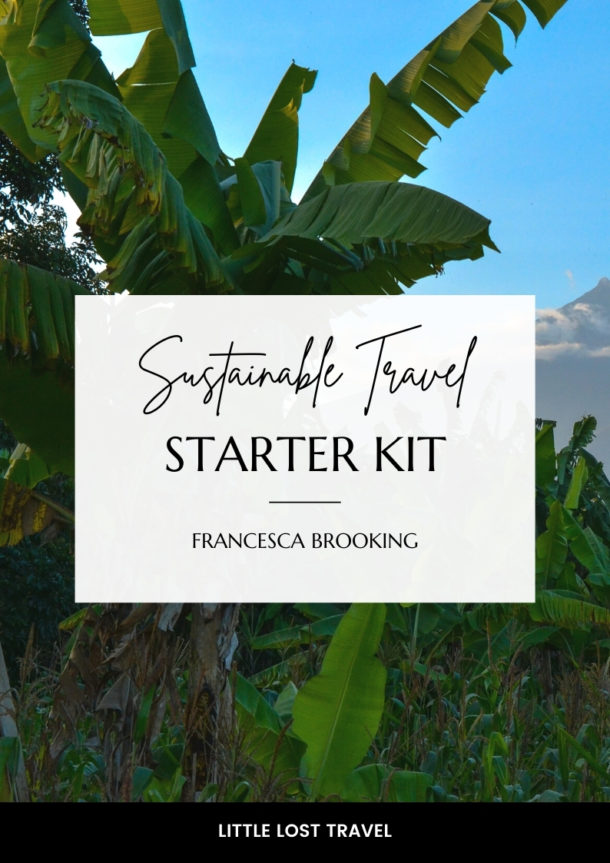
GET A FREE QUICK GUIDE TO SUSTAINABLE TRAVEL
Want free and helpful sustainable travel tips?
SUBSCRIBE and get:
+ Free sustainable travel STARTER KIT
+ 10-step guide to planning an ethical itinerary
+ Monthly email with helpful travel tips
Success! Check your inbox to confirm subscription.
By submitting your email you will be subscribed to my monthly newsletter. No spam, just awesome sustainable travel content! Unsubscribe at any time. For more information, visit my Privacy Policy.
Pin It on Pinterest
Last Updated on 13/10/2023
Book one of our trips for 2024/2025 today »
Slow Travel in Spain: Take your time
Even when you have lived somewhere for years, when you take the time to explore, not rushing from antique pillar to historic staging post, you discover things. Interesting things. Tasty things. Exciting things. That’s why we advocate slow travel.
Slow Travel is integral to Toma & Coe offerings, we bring our guests the local view. Immerse you in the culture, whichever aspect that may be, and no matter how long you stay.
To make it clear, slow travel doesn’t mean you have to stay here for months on end (though if you would like to, you’re more than welcome!) It’s about pacing your travels.
Defining Slow Travel
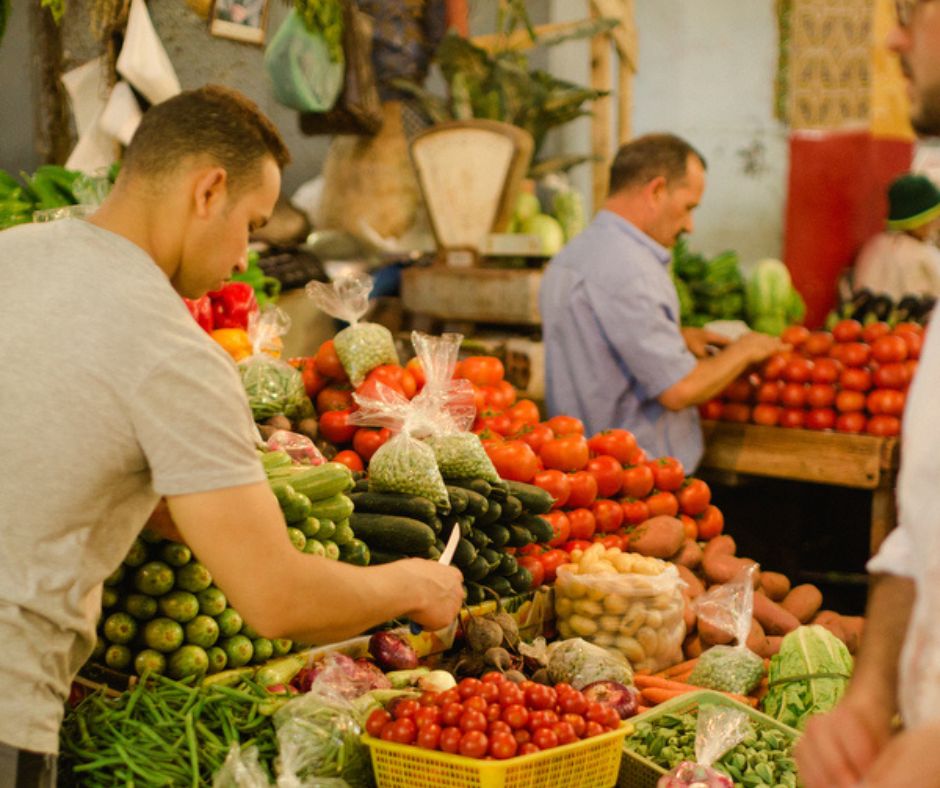
There isn’t a single definition of slow travel, but it certainly incorporates the following:
Pace yourself. Don’t try and cram everything into a short space of time. By doing so, you eliminate stress and don’t return from your vacation in need of another.
- A balanced itinerary
As above, pre-plan your trip (or let Toma & Coe take care of that element for you) so that each day isn’t packed to the gunnels with things to do and see. Variety is key, you’ll soon feel ‘museum-ed out’ if you jump from one to another in quick succession.
- Immerse yourself
Go deeper into things. For example, you want a culinary experience. Take a day to visit the market with your guide/cook, learn how to prepare the dish and then enjoy the taste in your cook’s dining room or garden.
Connect with yourself, those around you, the landscape, the architecture. You need to time to connect, and slow travel gives you just that.
- Sustainable
Making your travel sustainable needn’t be a chore. Hiking allows you to get in touch with nature and gives you space to think. Don’t drive from one place to another – take the train. You get to enjoy the views rather than cursing the lack of GPS signal at a crucial junction. There are some incredible train journeys in Spain . Choose accommodation that has sustainability at its heart.
Slow Travel in Spain with Toma & Coe
Sometimes, the thought of all that planning is overwhelming. This is our speciality. We understand the concept of slow travel, and why you need it – you have busy lives. Contact us with your requirements and we’ll do the rest.
For inspiration, below are just some of the experiences you can incorporate into your holiday in Spain. And they are just that, experiences that allow you to slow down and enjoy every moment of your time in Spain.
Malaga Cooking Experience
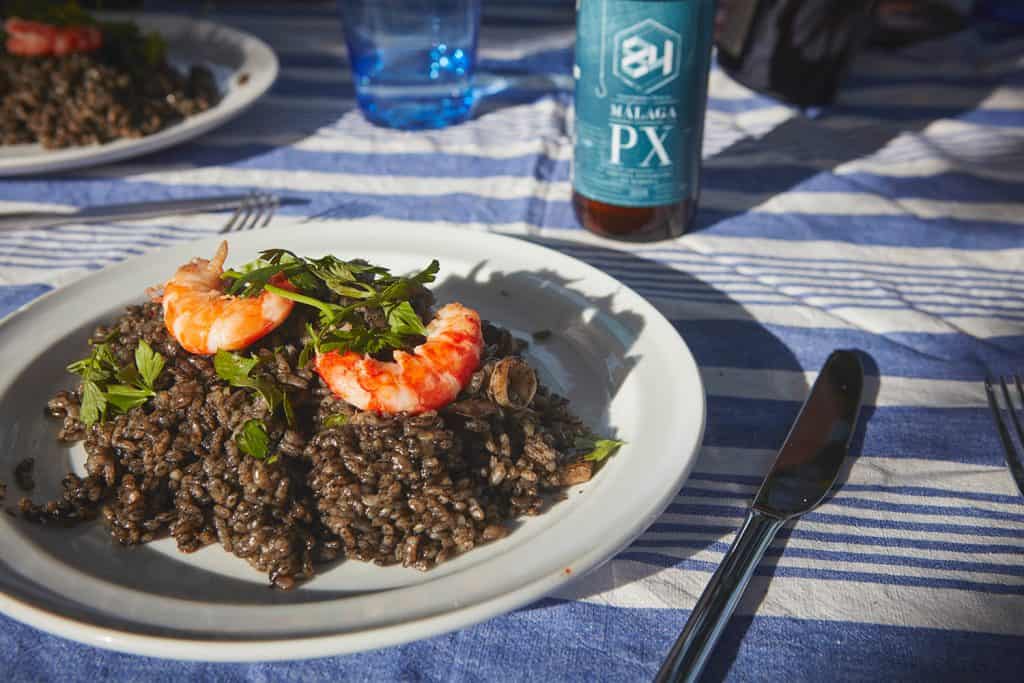
A guided foodie shopping spree in the historic, local market of Atarazanas kicks off our Malaga cooking experience . Once you’ve purchased all your ingredients, you head into the hills behind the city to an 18 th century Andalucian farmhouse with far-reaching views surrounded by olive groves. There you’ll prepare your dishes, before tucking in and enjoying a restful afternoon of laughter and companionship.
Wonderful Wine Weekend
Immerse yourself in the art of wine-making in rural Andalucia with our wonderful wine weekend tour . Learn about the different grapes, how bodegas make the wine, and of course, taste the finished product! All whilst staying in top accommodation in some of Andalucia’s lesser-known towns.
Walk the Camino de Santiago
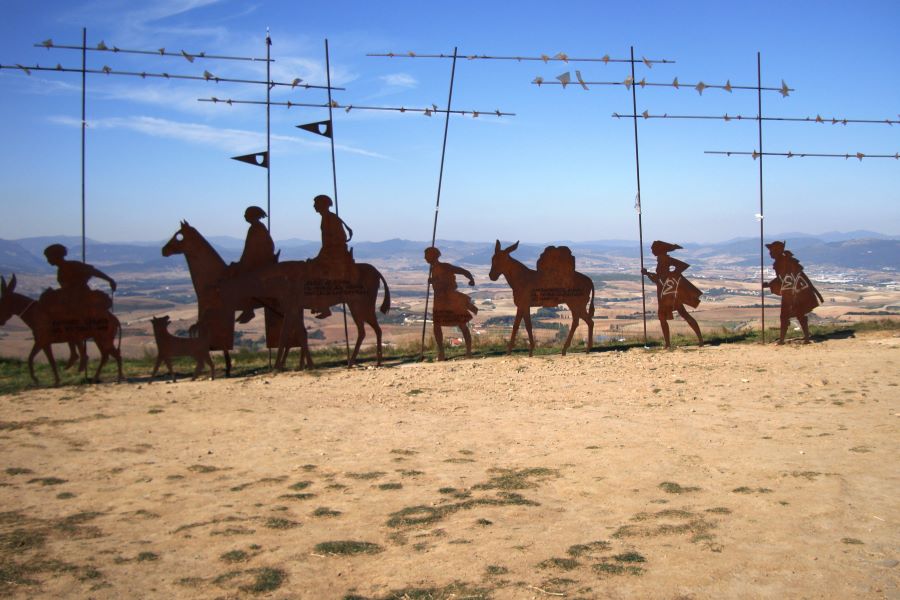
The ultimate in slow travel, the Camino de Santiago pilgrimage route culminating at the northern Spanish city of Santiago de Compostela is an incredible journey both physically and mentally.
Toma & Coe run guided Caminos at different times of the year. Read our very own Manni Coe’s article in The Guardian about his experience walking with his brothers.
Your own Bespoke Slow Travel Tour
Whether you’re here for a weekend, a fortnight or longer, we can create your very own bespoke Slow Travel Tour . Perfectly paced, you can immerse yourself in the Andalucian culture, reconnect and enjoy your well-deserved holiday.
Take the slow road, and experience the Spain you never knew – Slow Travel with Toma & Coe .
Stay connected

- Tour Account ›
- Travel Forum ›
- Travel Forum
Slow Travel in Spain
We have 3+ weeks to spend Feb-Mar 2024 during a sabbatical and have never been to Spain. We want to tour but also relax. We don't mind having a few days with nothing specific on the agenda, just sitting in cafes, walking around, and enjoying the city. We don't want to pack up and move every few nights. We understand we will only scratch the surface of what we could see in Spain. We are considering Week 1: Barcelona, Week 2: travel - perhaps 3 cities, 2 nights each, Week 3: Madrid. We love a combination of wandering through markets, highlights at museums, castles and cathedrals, some outdoors but not rigorous hiking. Thoughts?
Barcelona is a great place to visit, but you won't need a week there. Consider 5 days.
Don't miss Madrid (also Toledo and Segovia are near and you can do a day trip to both) 5 days there. Cordoba, its on your way to Seville, consider 2 nights. Seville, my favorite city in Spain. 4 nights is good. Malaga, also see Rhonda, 3 nights. Granada, two nights
The season also plays a role in choosing destinations. In summer, southern Spain is very hot.
Note: I haven't been to Spain in February-March, or to Barcelona/Madrid earlier than May. Madrid can be quite chilly in the winter; Barcelona averages about 10 degrees (F) warmer at that time of year. I'd be more inclined to go to Andalucia and--if I had time left over--Barcelona. Andalucia gets miserably hot in the summer, so this would be a great opportunity to see it under much better conditions.
A week in Madrid would allow time for multiple side trips. There are many really, really good ones: Toledo (worth an overnight or longer), Segovia, Cuenca, Salamanca, Alcala de Henares. Actually, I think all of those are worth an overnight, but they are often treated as day trips from Madrid.
Possible day trips from Barcelona include Montserrat (though I'm not sure about winter weather up there), Sitges (wonder whether it would be dead in the winter), Girona, Figueres (for the Dali Museum), Cadaques and Besalu. The last three would be faster to reach from Girona, which makes Girona ideal as a second base in Catalunya.
Between Barcelona and Madrid, right on the express rail line, is the very interesting city of Zaragoza. Its winter weather is quite similar to Madrid's, however.
If you want to stick to Barcelona + smaller towns + Madrid, these are among the places I'd consider for 2 or 3 nights: Girona, Zaragoza, Toledo, Cordoba. Valencia's also possible, but it would add more travel time.
For me, slow travel either means spending a least a week in one city then making daytrips out or making a meandering roadtrip through a focused area. It also depends on what you are interested in, specific history, beach, hiking, cuisine, nature, islands, mountains etc.? What drew you to chose Spain for your sabbatical? Will you be doing specific research?
Hooray for slow!! I feel strongly that it’s nearly impossible to truly know a place, its people and energy when too focused on maximizing sightseeing. 5+ days is my minimum ideal for medium and larger cities.
I’d do a trifecta of Sevilla, Madrid, and Barcelona. (Connect straight into Sevilla, fly out of Barcelona, trains between them.) [maybe swap Valencia for Sevilla, leaving the south for later exploration.]
Do you need a full week in each? No. But apart from seeing sights, it won’t be hard to fill the time wandering, browsing, two-hour lunches, people watching from a bar’s terrace a languid vermut…
Feb/March maybe isn’t the best time of year. But we don’t all have the luxury of super flexible schedules— wearing a jacket and carrying an umbrella is certainly better than just staying home.
This topic has been automatically closed due to a period of inactivity.
- TV & Film
- Say Maaate to a Mate
- First Impressions - The Game
- Daily Ladness
- Citizen Reef
To make sure you never miss out on your favourite NEW stories , we're happy to send you some reminders
Click ' OK ' then ' Allow ' to enable notifications
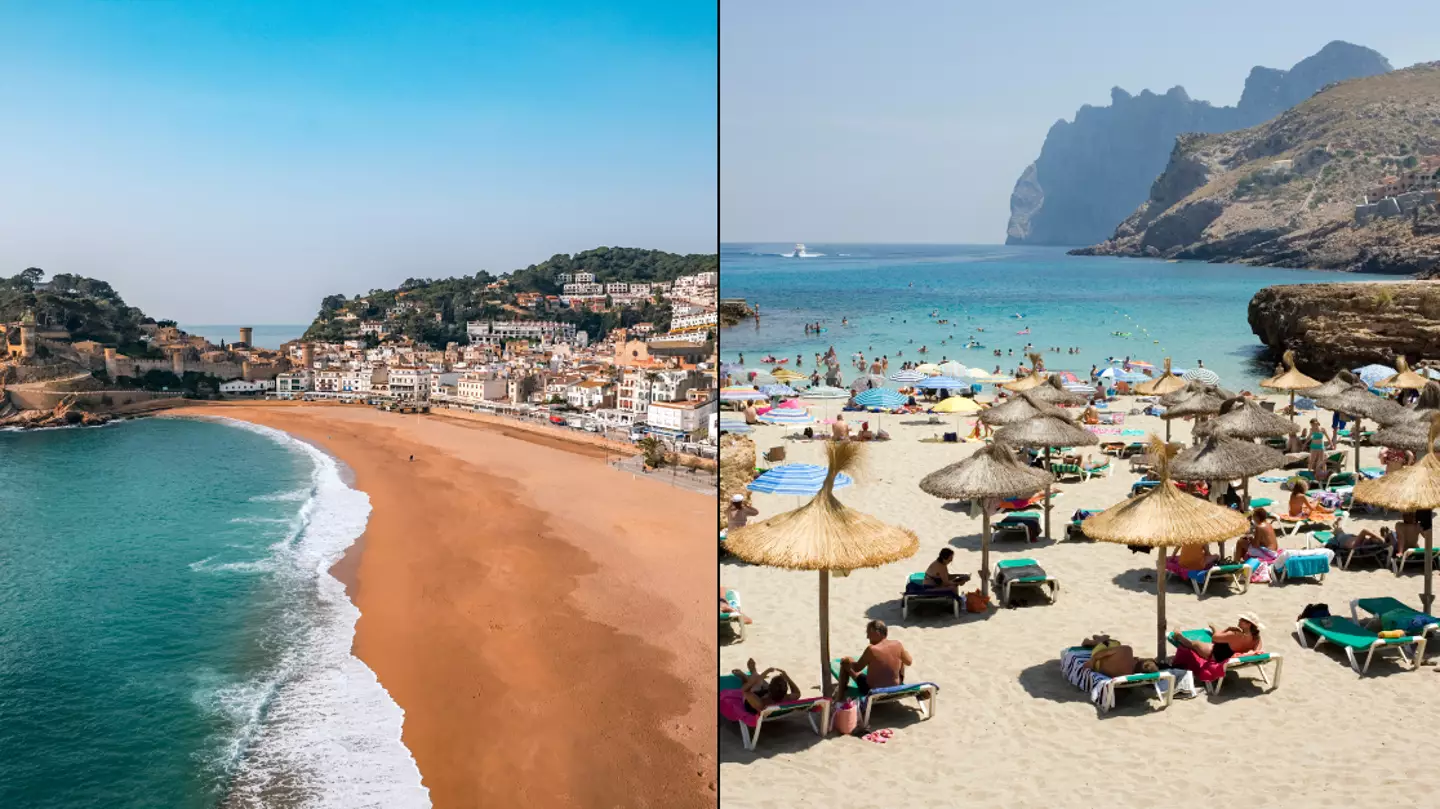
Holiday expert explains how Spain's new £97 daily charge will affect your holiday
All has been explained on the new tourist rule that was introduced in spain.

Joshua Nair
As the weather gets warmer, a lot of us are beginning to get onto those flight and hotel websites to book a summer getaway, with many often favouring Spain as a nearby holiday location with amazing weather.
It is well documented that the European country is a popular holiday hotspot for Brits , so you can imagine that it was a shock when people found out about the new money law put in place there for tourists.
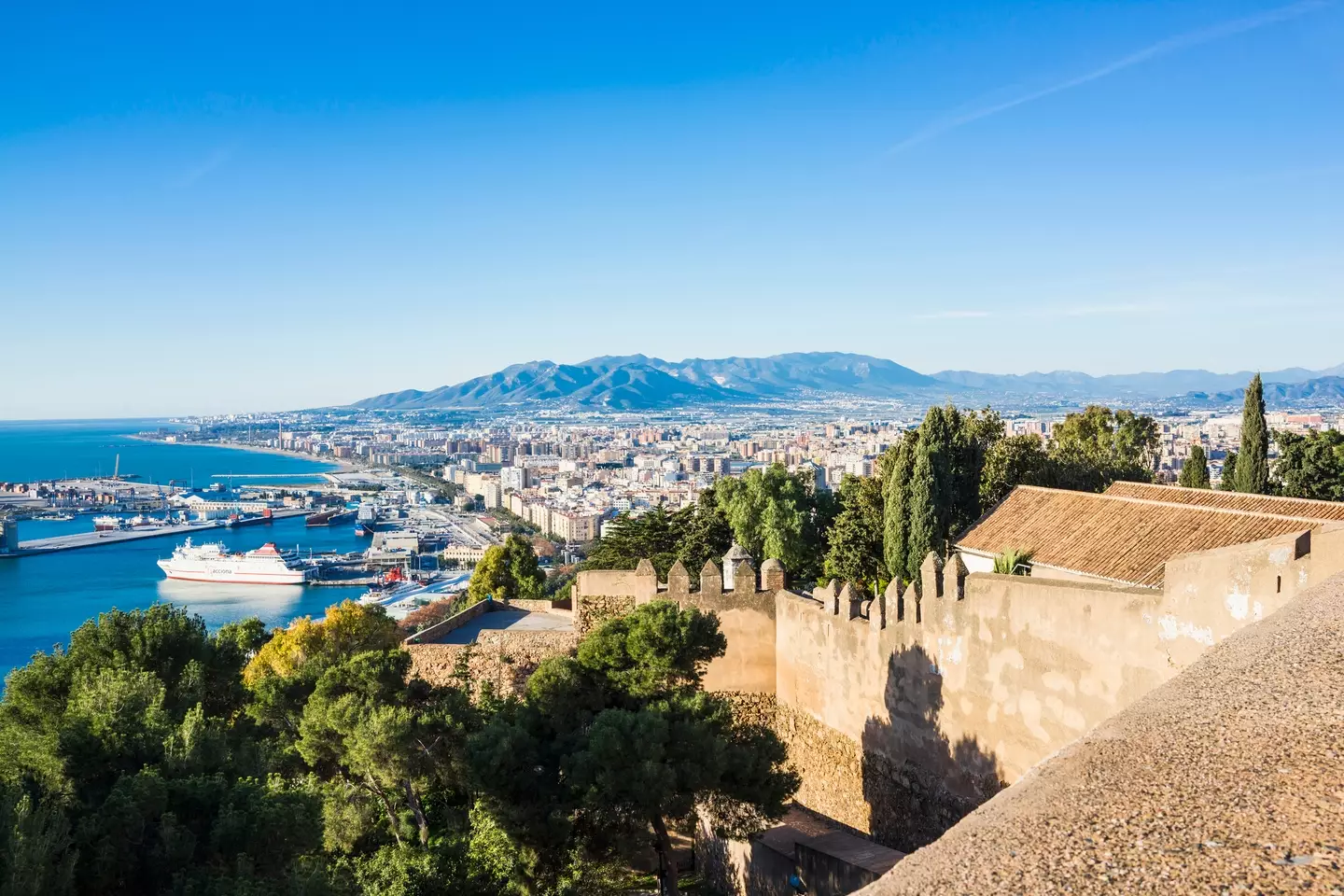
The new law states that Britons must be able to show proof that they have at least €113.40 (£97) per person, per day, during their stay in the country.
It's fair to say that the news hasn't been received well, with many threatening not to go back to the holiday destination following the implemented law.
Chelsea, an expert from cheapholidayexpert.com has explained all the ins and outs of the law, such as what we can do to prepare, how serious it is, and what to do if we don't have the required funds.
How new is this rule?
Well, it turns out that this rule is not new at all, as it has been in effect since 1 January 2022, though back then it was at £85 a day per person, being increased to £93 per day in 2023.
So, there's no reason to be scared, it has been quite standard and in place for a while, though it is under a spotlight now that we're past the COVID years.
Should we blame Brexit?
In short, yes.
As the UK left the EU , Brits don't have the freedom of moving throughout the continent anymore, and have to go through closer, more thorough checks.
This can be anything, such as:
- Showing you have enough money for your stay
- Showing proof of accommodation for your stay
- Showing a return or onward ticket
But this could happen in any EU country, not just being limited to Spain - and with that being said, these rules aren't exclusive to the UK either, instead applying to all third party countries as a standard rule.
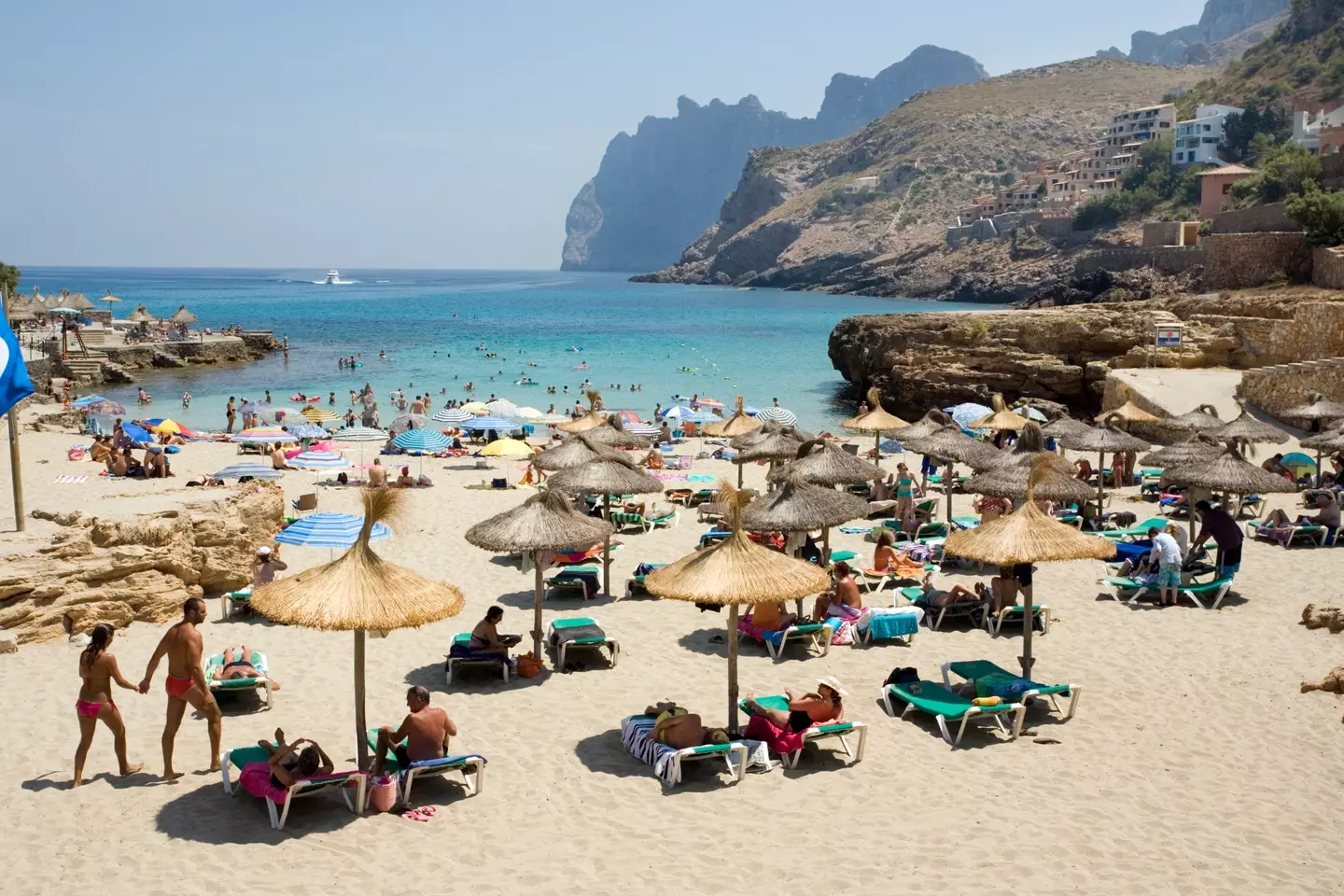
How will it affect my holiday?
The Spanish ministry states that: "Foreigners must prove, if required to do so," about proof of funds, meaning that it isn't compulsory for them to check every tourist's bank statement upon arrival.
Think of it as a random spot check, you may get picked, or you may not.
Has this actually happened to anyone?
Chelsea posted on her Instagram once the news broke, asking people who has travelled to Spain since the start of 2022 to share if they were asked about money.
Only four of the 1373 people asked said that they had, and provided stories about what had happened.
All of them went through the checks in 2022, and only one had to show proof of accommodation, a return flight, and just flashed their credit card to the officer, who seemed unbothered to see a bank statement or account balance.
The others got away with flashing their credit cards, with no real thorough checks taking place according to them.
But with that being said, they may begin to stop more people as the number of tourists into the country increases.
How should I prepare?
No matter how slim the chance, it's key to have the following at hand:
- Confirmation of your return flight or onwards travel
- Confirmation of your booked accommodation and the address of where you’re staying
Screenshots will do, though PDFs and official confirmations will probably look better.

How do I prepare to prove that I have enough money?
First and foremost, you have to work out if you have £97 per day, with people in families or groups having to do more maths to make this work.
Showing bank cards might be the key, so make sure they're easily accessible, though it sounds like officers are looking for verbal confirmation so far from tourists, according to Chelsea.
The Spanish Ministry of Interior also states you can prove it: "...in cash, or by presenting certified checks, traveler's checks, letters of payment, or credit cards, which must be accompanied by a bank account statement or an up-to-date bank book (letters from banks or Internet bank statements will not be accepted) or any other means with which the amount available as credit of said card or Bank account."
What if I don't have enough?
There are no known cases of this yet, but the official ruling from the Spanish government states: "In the event that, when carrying out the entry control of people in Spanish territory, it is verified that a foreigner lacks sufficient economic resources for the time he wishes to remain in Spain and to continue his trip to the country of destination or to return to the country of origin, or do not have the registered, non-transferrable and closed ticket or tickets, in the means of transport they intend to use, their entry into Spanish territory will be denied as established by regulation."
It does also state that in exceptional circumstances, you could still get let in, but the length of your stay may be reduced.
Bottom line: Come prepared!
This is how it's going to be from now on.
Topics: Holiday , Travel , Money , Brexit , UK News
Joshua Nair is a journalist at LADbible. Born in Malaysia and raised in Dubai, he has always been interested in writing about a range of subjects, from sports to trending pop culture news. After graduating from Oxford Brookes University with a BA in Media, Journalism and Publishing, he got a job freelance writing for SPORTbible while working in marketing before landing a full-time role at LADbible. Unfortunately, he's unhealthily obsessed with Manchester United, which takes its toll on his mental and physical health. Daily.
@ joshnair10
- Brits warned they must follow new £97 rule if going on holiday to Spain this summer
- Go-to holiday destination considering fines for Brits as Spain introduces £97 a day rule
- UK tourists threaten to 'not go' on Spanish holidays after new £97 rule introduced
- Nine major holiday destinations that are charging Brits more to visit this summer
Choose your content:

Common mistakes people make when getting their passport photo taken that could be costly
Turns out there's loads of things you can be doing wrong in your passport photo that you didn't even think about.
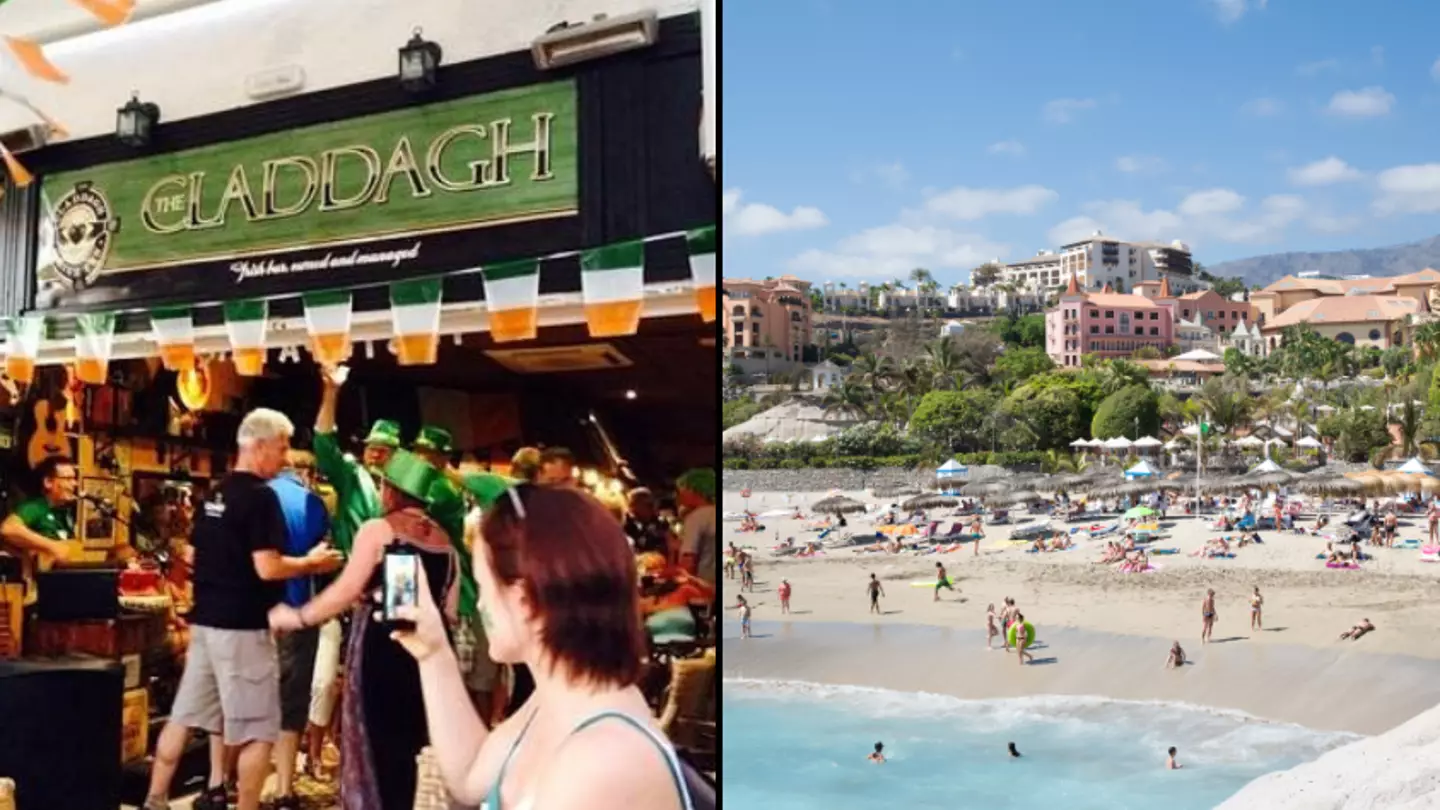
Tenerife bar owner slams 'tourism ban' as UK tourists threaten to 'not go' over new £97 daily tourist fee
Locals in the canary islands are claiming that tourism is destroying the economy.
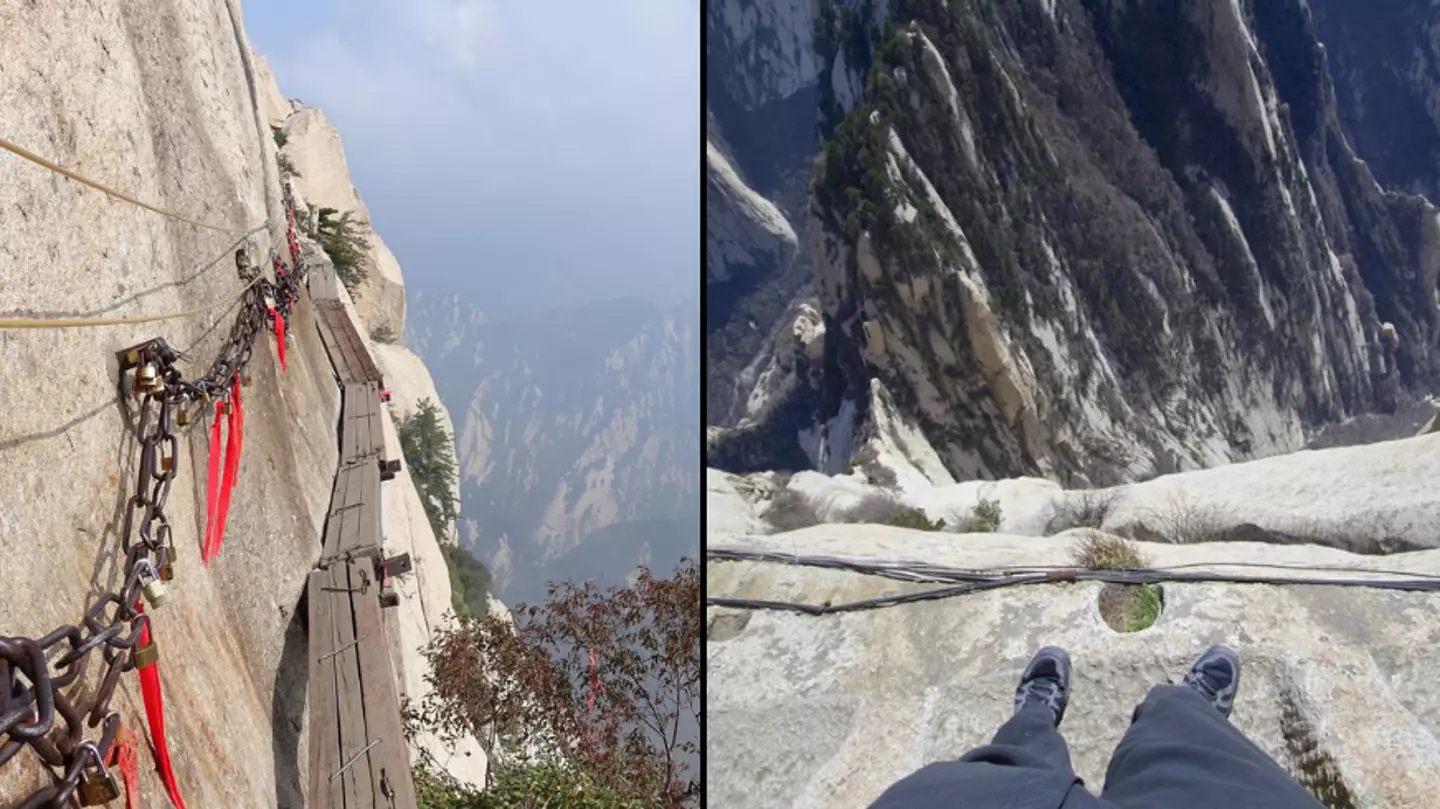
'World's most dangerous walk' where it’s rumoured 100 people die per year and a harness is needed to travel across
Mount huashan is thought to be one of the most dangerous hikes.

People baffled as Papa Johns launches garlic butter candle that you can dip as it melts
Apparently, it's a real thing.

Slow Travel Tours in Ronda, Spain
Experience a different kind of travelling through the slow travel concept.
Ever since Entrelenguas opened in 2014, we’ve been developing an alternative concept of tourism in Ronda, Spain through the Slow travel movement , offering travellers and tourists the opportunity to get to know the city and its surroundings in a different and captivating way. We firmly believe that tourism agencies and other businesses owe their success to their environment and the local organisations in which their activities take place.
Therefore, all our activities are intended to encourage and strengthen participation in the local community , all whilst setting the stage for travellers to have an authentic experience of local life here in Ronda. We take great pride in the fact that our visitors have a memorable experience, the likes of which aren’t offered by mass tourism or other Ronda tours.
Customize your trip with us!
Combine all the activities and make the most of your trip to ronda, spain, guided tour of ronda, organic escape to the olive grove, guided tour of the white villages, the authentic ronda tour, cooking in the vineyard, organic wine tasting in ronda, iberian ham adventure, spanish culinary experience.
Group and individual cancellations
• In the event of cancellations 16 days or more before the commencement of the activity, Entrelenguas will retain 20% of the total cost of the activity for management and running costs.
• In the event of cancellations between 8 and 15 days before the commencement of the activity, Entrelenguas will retain 30% of the total cost of the activity.
• In the event of cancellations between 3 and 7 days before the commencement of the activity, Entrelenguas will retain 55% of the total cost of the activity.
• In the event of cancellations 48 hours or less before the commencement of the activity, Entrelenguas will retain 100% of the cost of the activity.
(*) Note: These percentages will always be applied when the reason for cancellation is not due to force majeure. In the case of force majeure, on the company or the client, 20% of the total programme cost will be charged. In order to validate a cancellation request, sufficient and valid proof and explanations will need to be provided, in written form to [email protected]
Slow Travel concept
Ronda Spain — Slow Ronda is a Spanish travel company that develops authentic and sustainable activities based on the Slow Tourism philosophy. In that way, we are proud to provide travellers with a wide range of tours and activities in Ronda, Andalusia. We help people to experience the local culture, history, and craftsmanship of this marvellous city high in the clouds.
Quick Links
+34 675 153 133 info@entrelenguas. com
Central office Calle Espíritu Santo 9 29400, Ronda, Málaga
Experience the Slow travel concept
Customize your trip with us &, let us create a personalised itinerary for your time in ronda & get the best of the real spain.

IMAGES
VIDEO
COMMENTS
It's just 30 square kilometres with no paved roads, ideal for travellers who love empty beaches, silence and beauty. A third option is Minorca (Balearic Islands), with plenty of slow tourism attractions, such as outdoor painting and local food markets, which you can enjoy in peace in spring and autumn. And from Minorca, you can take a side ...
A Spain Road Trip: Perfect for Slow Travelers. Spain is one of Europe's top places to slow travel, and these 13 ideas for Spanish road trips — from the verdant north of Spain to the mountainous interior down to the stunning Andalucia coast and the arid Natural Park of Cabo de Gata — are some of the best road trips in Spain.
It will focus on lesser-known destinations in Spain and showcase activities with a low impact on the environment such as hiking and cycling. Slow travel in Spain can also mean choosing to travel via rail, Spain's Tourism Board has said, or participating in "responsible activities", from eating locally-sourced food to staying at a small ...
The idea is to take one's time exploring a destination to support the local economy. If this notion piques your curiosity, then read on. These are my personal experiences of slow traveling Andalusia and a few of the pueblos not to miss. My first time in Spain was back in 2014. I would have graciously guffawed at anyone proclaiming that five ...
Slow Travel: Experience the Spain you never knew. By Deborah Cater on June 22, 2022. Slow Travel is a way of travelling that allows you to connect - with the culture, people and their way of life. At TOMA & COE, we help you do just that through our bespoke, guided tours and trips. Slow Travel is a mindset.
Grazalema is an old village nestled in the northeastern Cadiz province. Here you can experience a unique piece of Spain's culture and dine on local honey or shop for souvenir blankets featuring traditional Spanish weaving techniques. Grazalema is also a popular stop for adrenaline junkies who can't get enough of the bull festival celebrations.
Northern Spain is green and biodiverse - the way we experience it can be green, too. Tessa Dunthorne embarks on a slow travel trip around Asturias and Cantabria.. Review: A Slow Trip Around Spain 'We are very poor in money, but very rich in nature,' our tour guide, the wild man Fernando, tells us, one hand on the wheel of his 4×4 and another clutching a pair of binoculars ...
14 October 2022. Train travel will be a clean and safe way to get around in many countries once international holidays return. Spain has plenty to offer rail enthusiasts, with a large network that spans the length and breadth of the country, and sleeper carriages helping travellers cover long distances with minimal fuss.
Ronda Spain — Slow Ronda is a Spanish travel company that develops authentic and sustainable activities based on the Slow Tourism philosophy. In that way, we are proud to provide travellers with a wide range of tours and activities in Ronda, Andalusia. We help people to experience the local culture, history, and craftsmanship of this ...
We will explore some of the top destinations in Spain that are ideal for experiencing the art of savoring every moment.
With a growing number of travel restrictions in place at every border you cross, the idea of spending more time in fewer destinations is more appealing than ever! Today, we're joined by local guide Jesus who lives in a quiet corner of southeast Spain called Almeria. It's the perfect, off the beaten path spot to sink into the Spanish ...
Ronda Spain — Slow Ronda is a Spanish travel company that develops authentic and sustainable activities based on the Slow Tourism philosophy. In that way, we are proud to provide travellers with a wide range of tours and activities in Ronda, Andalusia. We help people to experience the local culture, history, and craftsmanship of this ...
Spain Travel Guide. Last Updated: February 12, 2024. Spain is a country that moves slow. This is the land of the siesta. It's a place for foodies, night owls, history buffs, religious pilgrims, and anyone not in a rush to do just about anything! It's a huge country with a lot of variety: Madrid and Barcelona are hip and energetic cities ...
The Spanish Tourist Office is delighted to launch a Slow Travel campaign entitled #SlowTravelSpain. The #SlowTravelSpain campaign, will highlight sustainable forms of travel in Spain and its islands, recognising the importance of forming a connection with local people and cultures when travelling whilst also lessening harmful impact on communities and the environment.
Slow travel ideas: Northern Spain's Feve trains run on a trio of railways that are often hidden from railway maps. Running on 1000mm narrow-gauge lines, they connect Bilbao in the Basque Country to Ferrol Galicia with more than 100 stops along the way. Slovenia. Slovenia is the first country in the world to be declared a Green Destination.
Whether you opt for the Catalan Coast or the cities of Spanish South, there's so much to see when you slow travel Spain. Destinations, Slow Travel Lori Sorrentino October 5, 2021 Spain, slow travel, seasonal, tours Comment. Facebook 0 Twitter LinkedIn 0 Reddit Pinterest 0 0 Likes. Previous.
Slow travel is the way to go! With 10 days in Granada, you'll have plenty of time to check off the iconic sights and immerse yourself in local culture. ... There's so much to be said about the fabulous beaches in Spain, but the coast of Granada has something special. For one, many tourists overlook it in favor of bordering provinces Málaga and ...
Ronda Spain — Slow Ronda is a Spanish travel company that develops authentic and sustainable activities based on the Slow Tourism philosophy. In that way, we are proud to provide travellers with a wide range of tours and activities in Ronda, Andalusia. We help people to experience the local culture, history, and craftsmanship of this ...
Spain is home to some of Europe's best regions for slow travel, from the Basque country in the north to Don Quixote country, Castile La Mancha. One that stands out for all the right reasons is Andalusia. The historic Moorish kingdom packs in something for every interest. The sunkissed energy of Malaga, the historical marvels of Grenada, and ...
Walk the Camino de Santiago. The ultimate in slow travel, the Camino de Santiago pilgrimage route culminating at the northern Spanish city of Santiago de Compostela is an incredible journey both physically and mentally. Toma & Coe run guided Caminos at different times of the year.
Ronda Spain — Slow Ronda is a Spanish travel company that develops authentic and sustainable activities based on the Slow Tourism philosophy. In that way, we are proud to provide travellers with a wide range of tours and activities in Ronda, Andalusia. We help people to experience the local culture, history, and craftsmanship of this ...
Slow Travel in Spain. We have 3+ weeks to spend Feb-Mar 2024 during a sabbatical and have never been to Spain. We want to tour but also relax. We don't mind having a few days with nothing specific on the agenda, just sitting in cafes, walking around, and enjoying the city. We don't want to pack up and move every few nights.
Shauna Jackson | The lively streets of Granada. #igtravel #spain #españa #granada #andalucia #travelgirl #slowtravel #music #nofilter #solotravel #noma... | Instagram.
Well, it turns out that this rule is not new at all, as it has been in effect since 1 January 2022, though back then it was at £85 a day per person, being increased to £93 per day in 2023. So ...
Ronda Spain — Slow Ronda is a Spanish travel company that develops authentic and sustainable activities based on the Slow Tourism philosophy. In that way, we are proud to provide travellers with a wide range of tours and activities in Ronda, Andalusia. We help people to experience the local culture, history, and craftsmanship of this ...